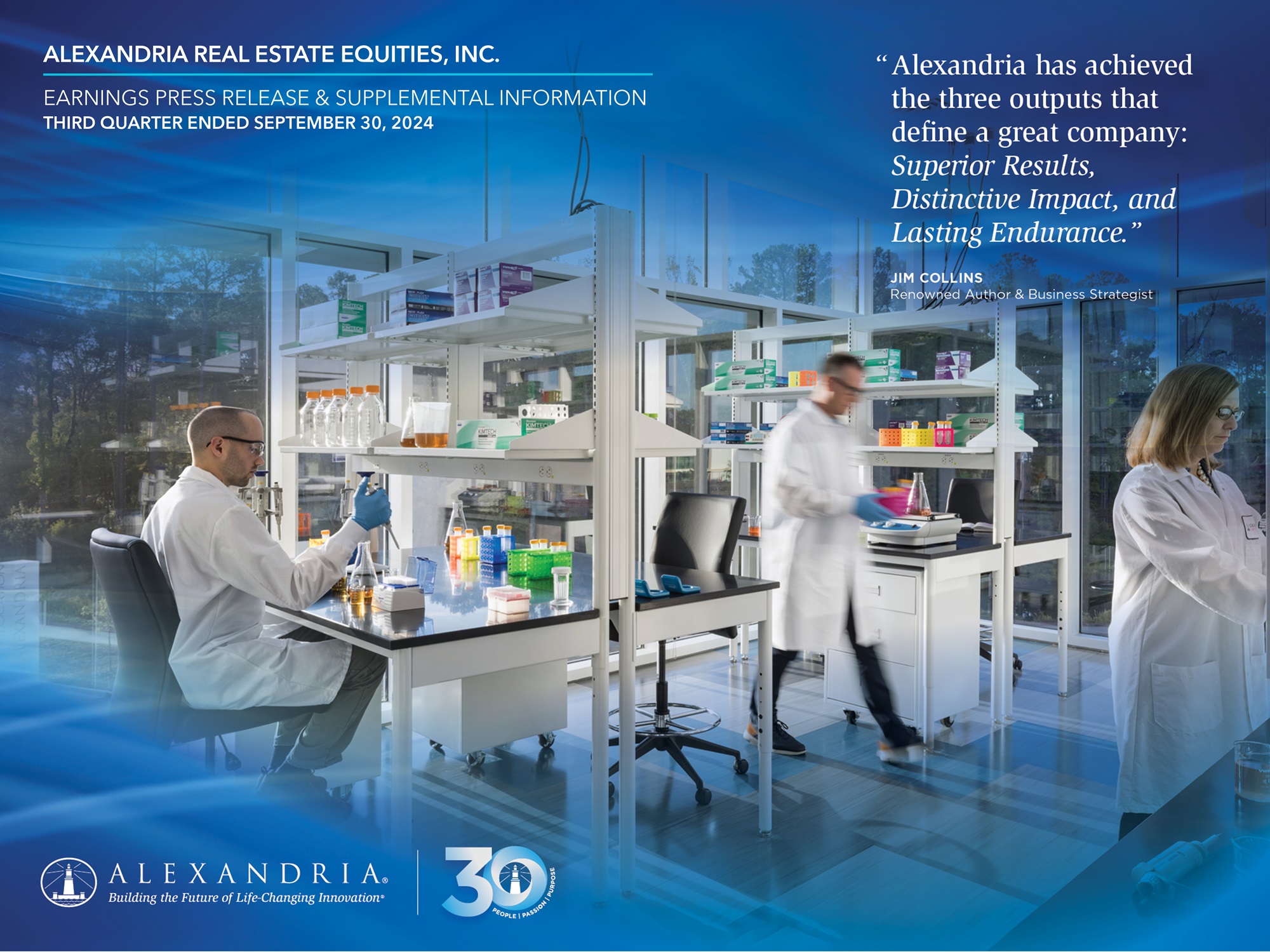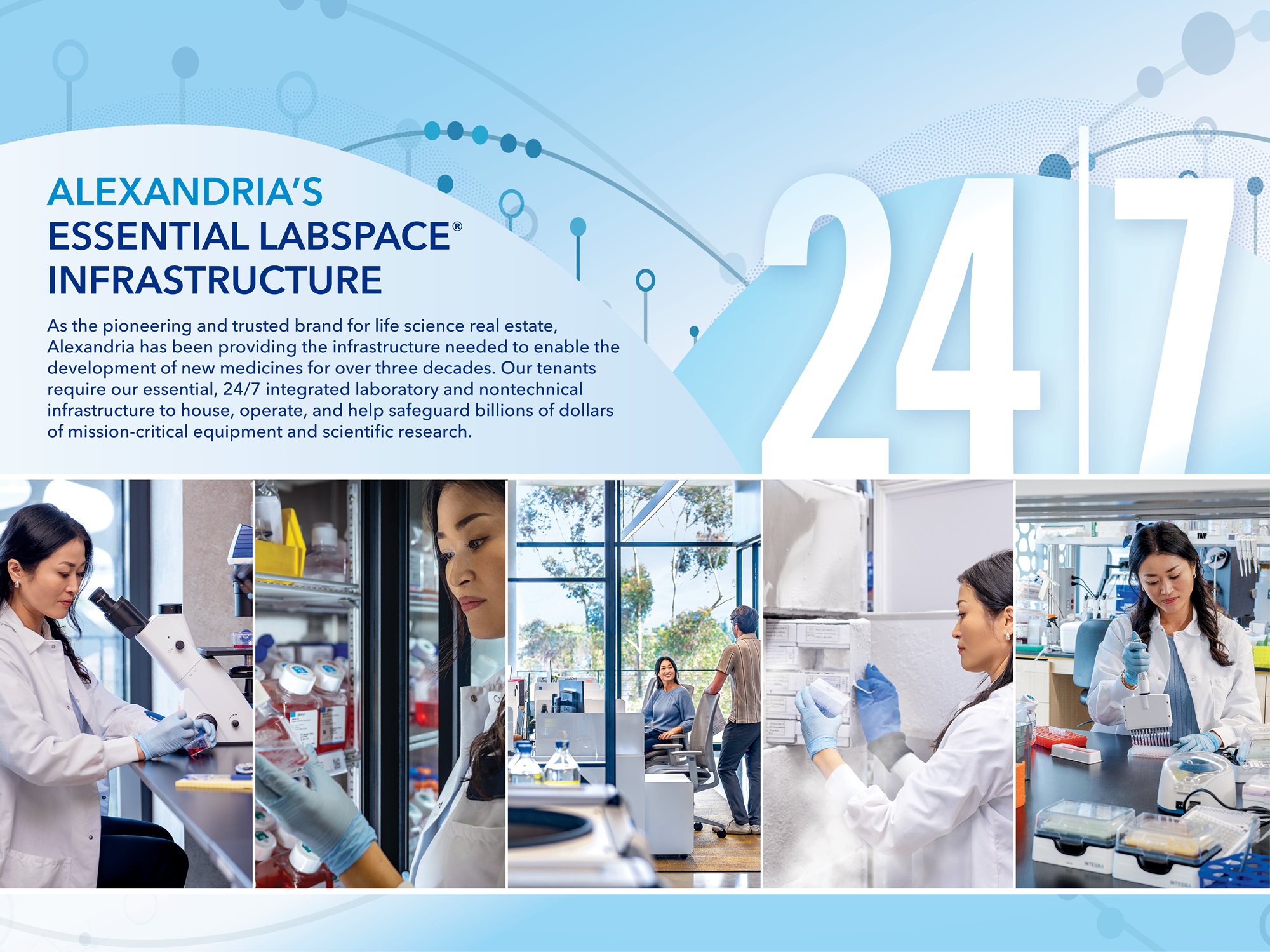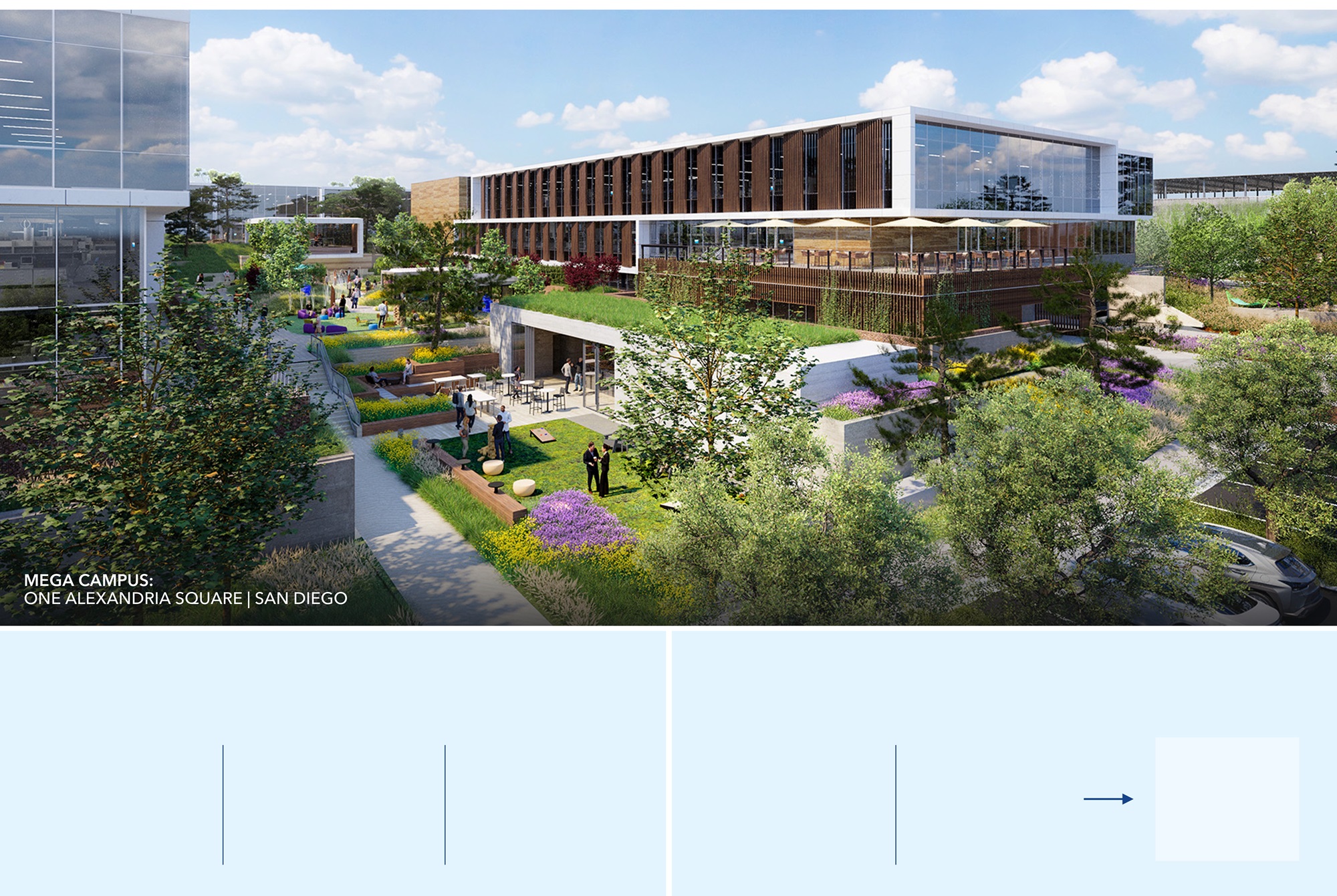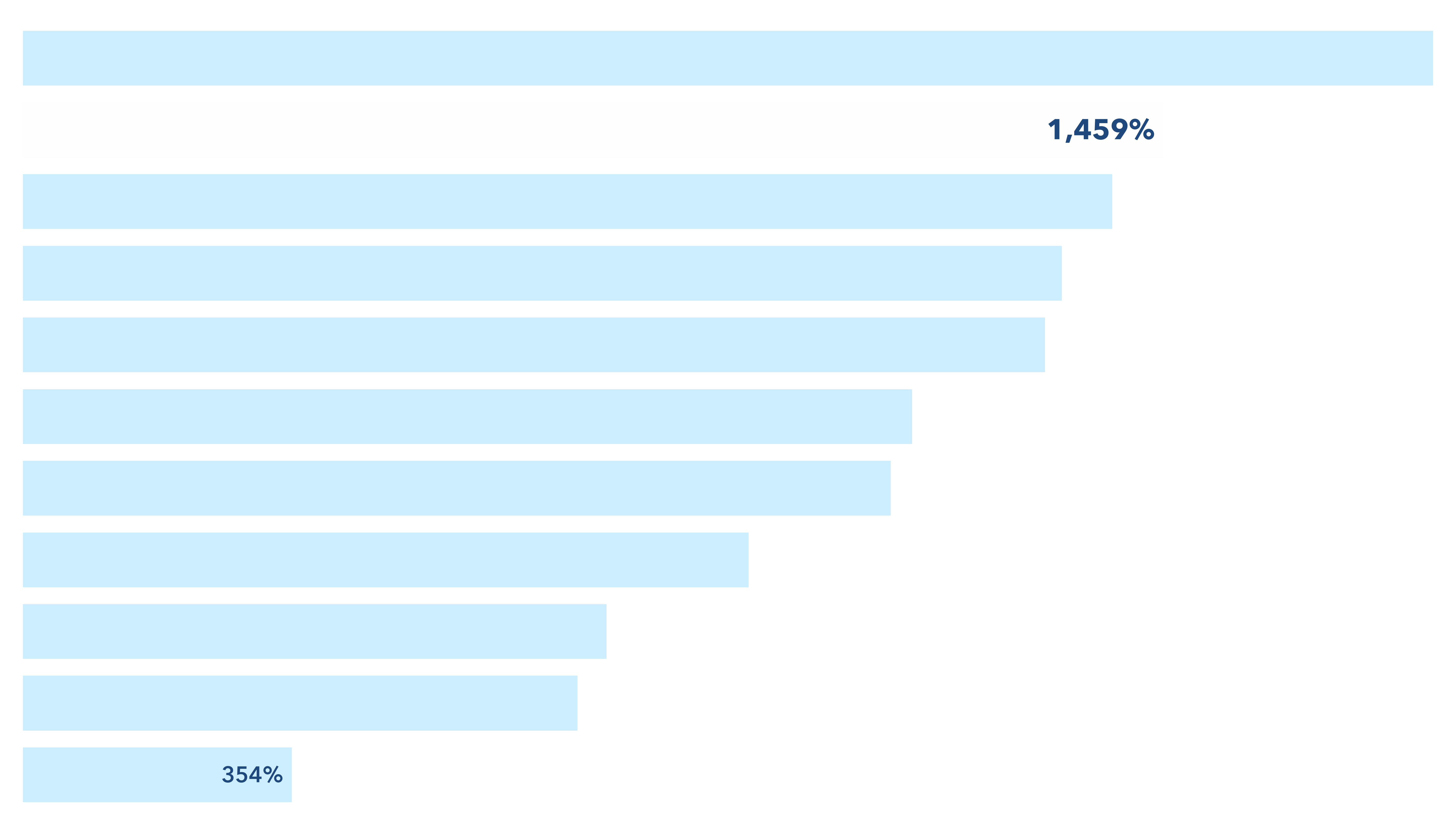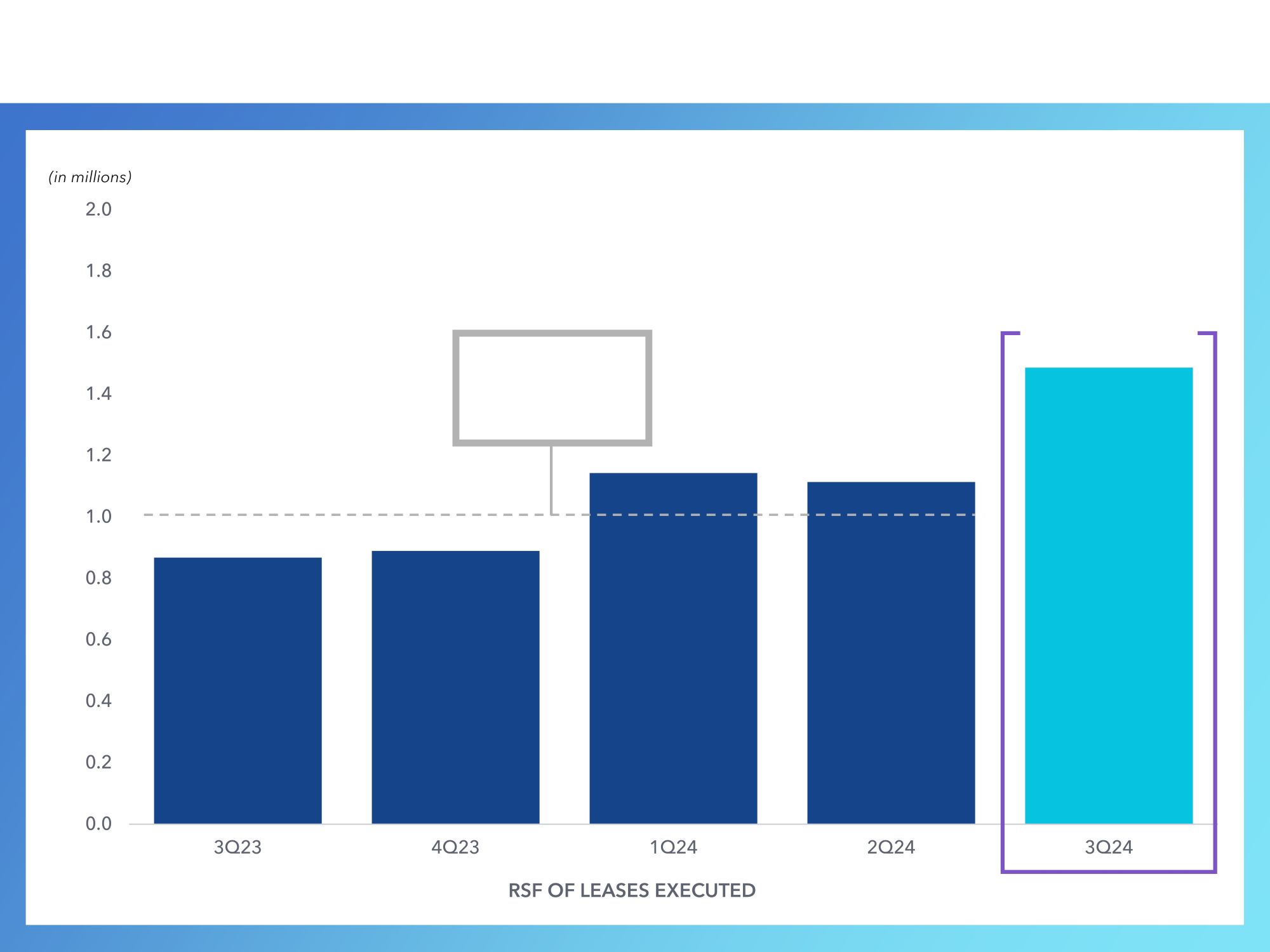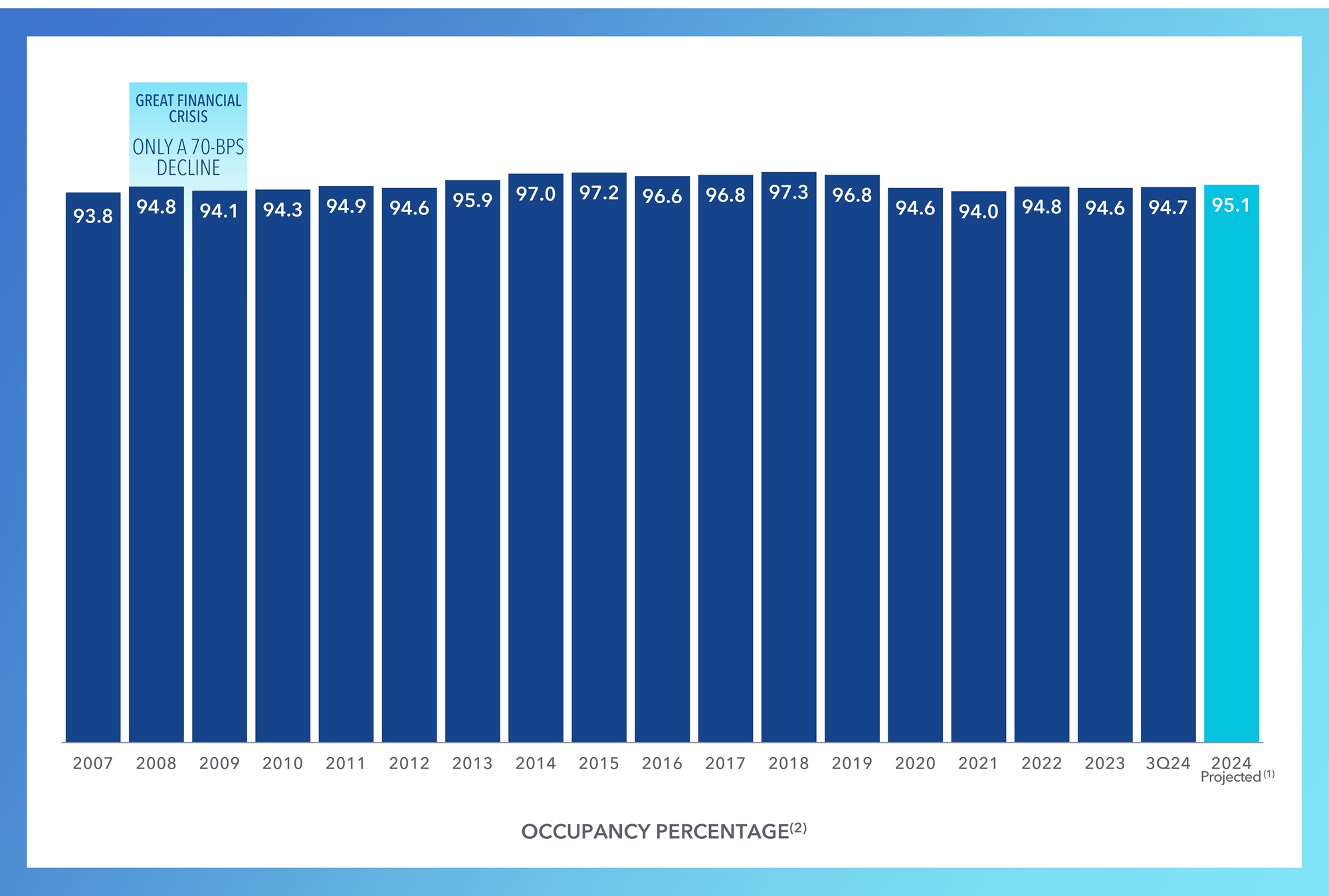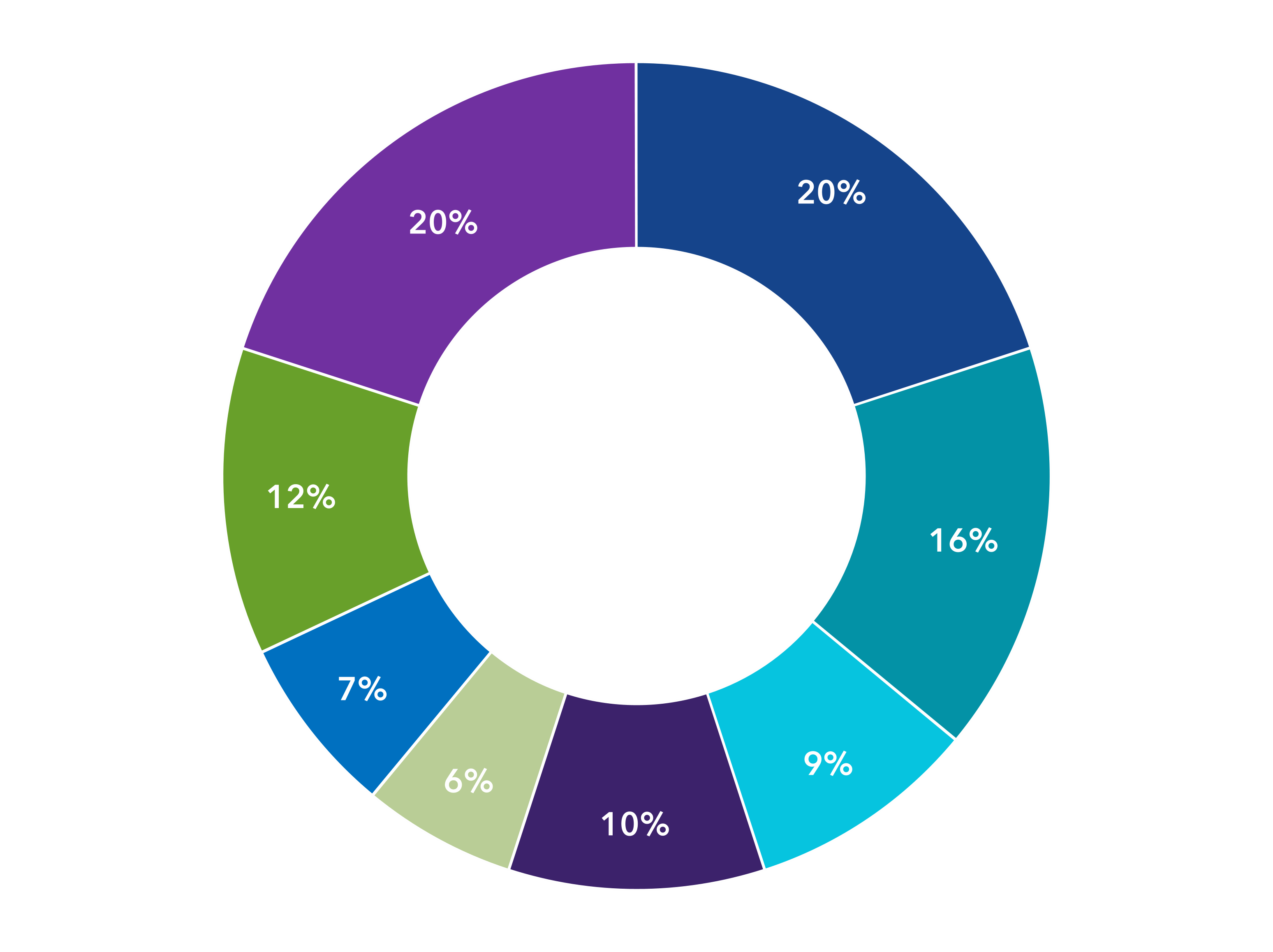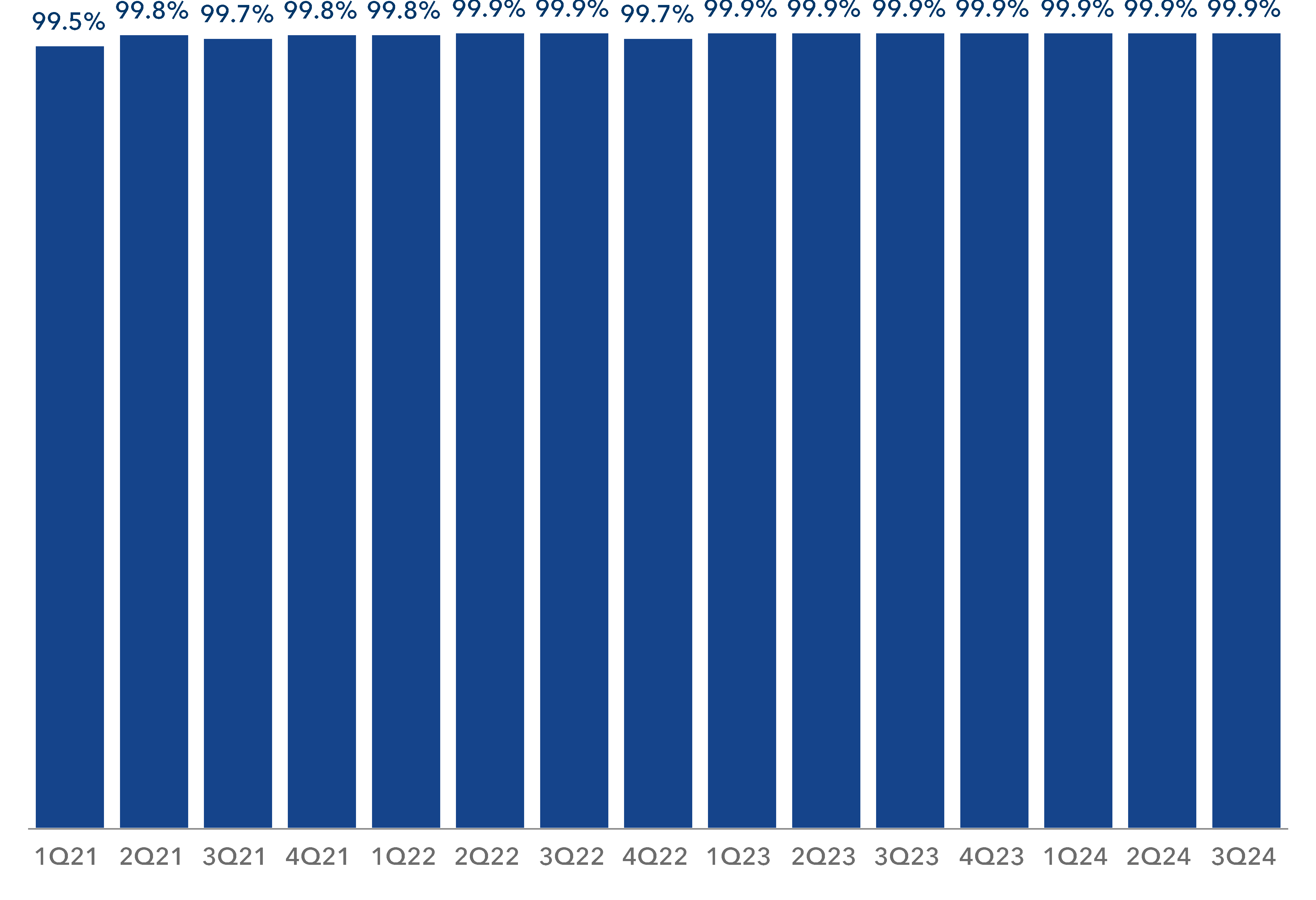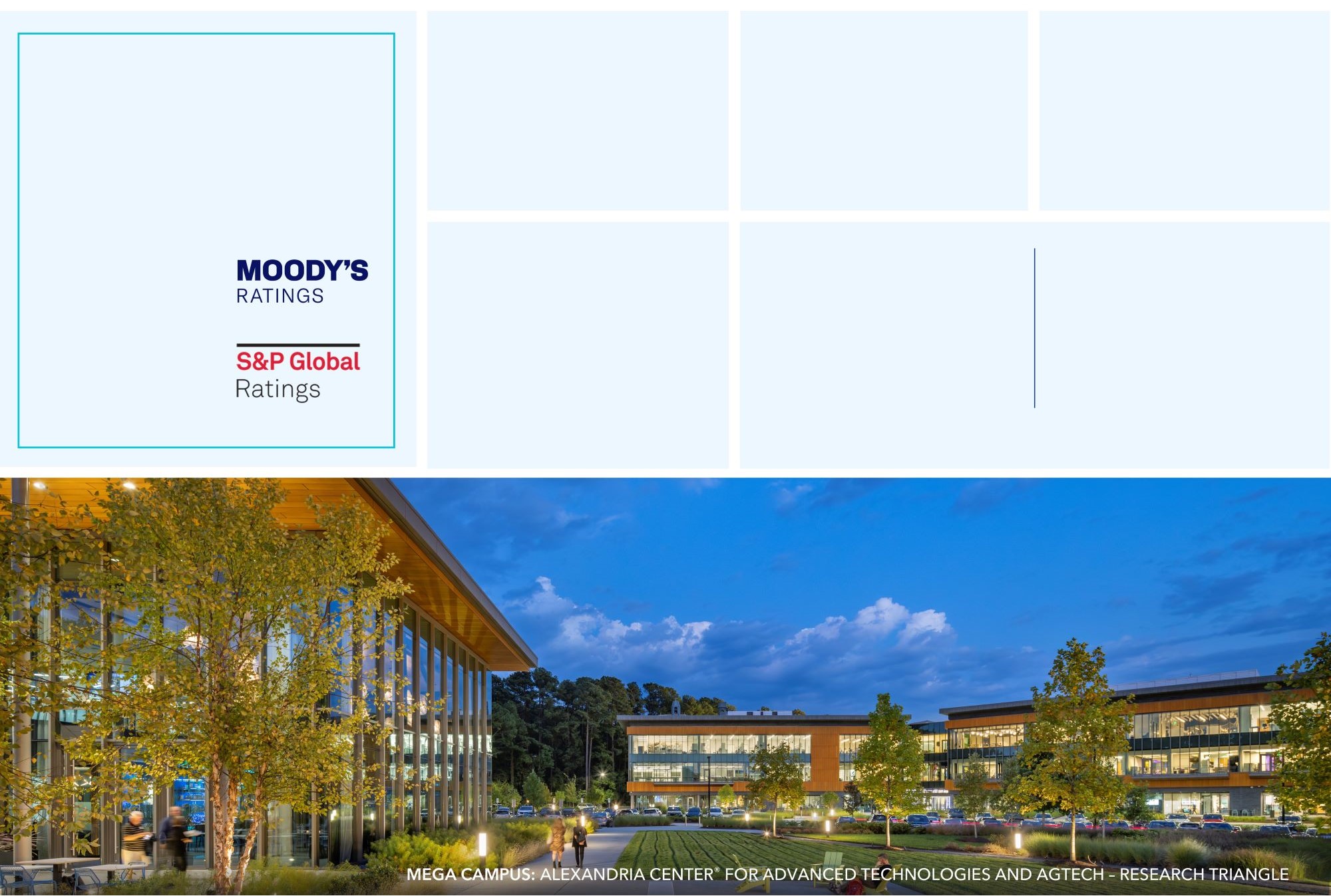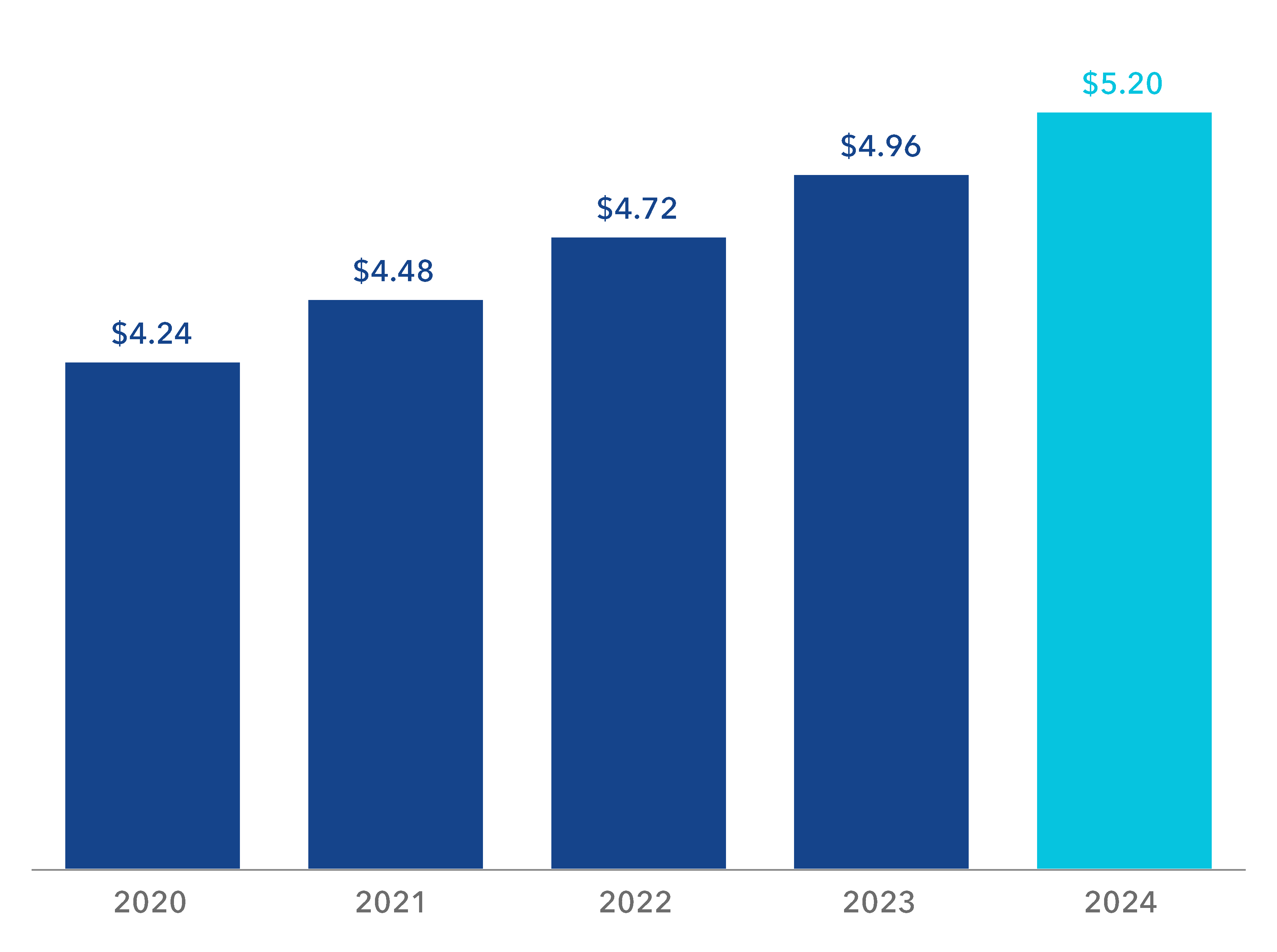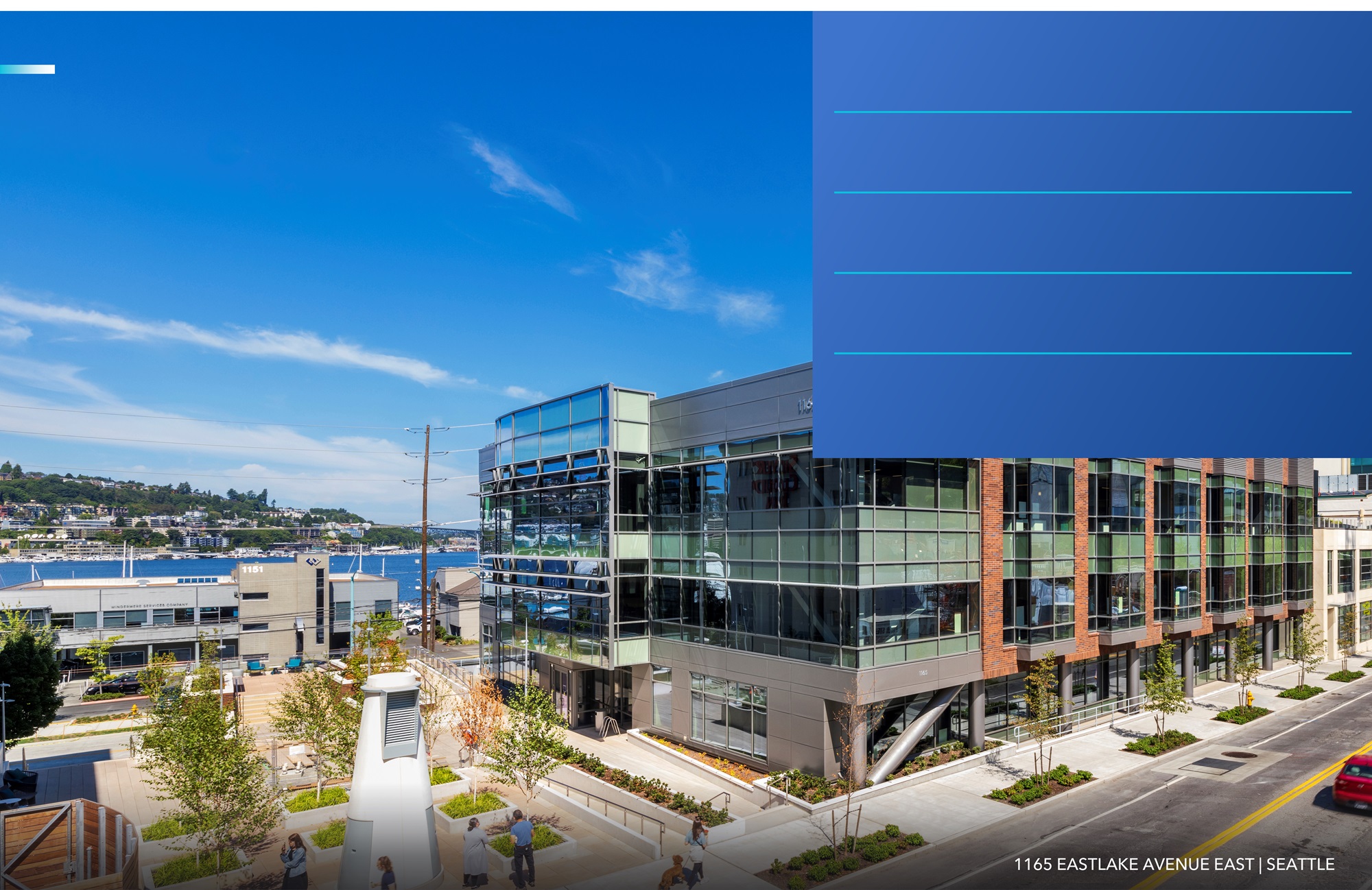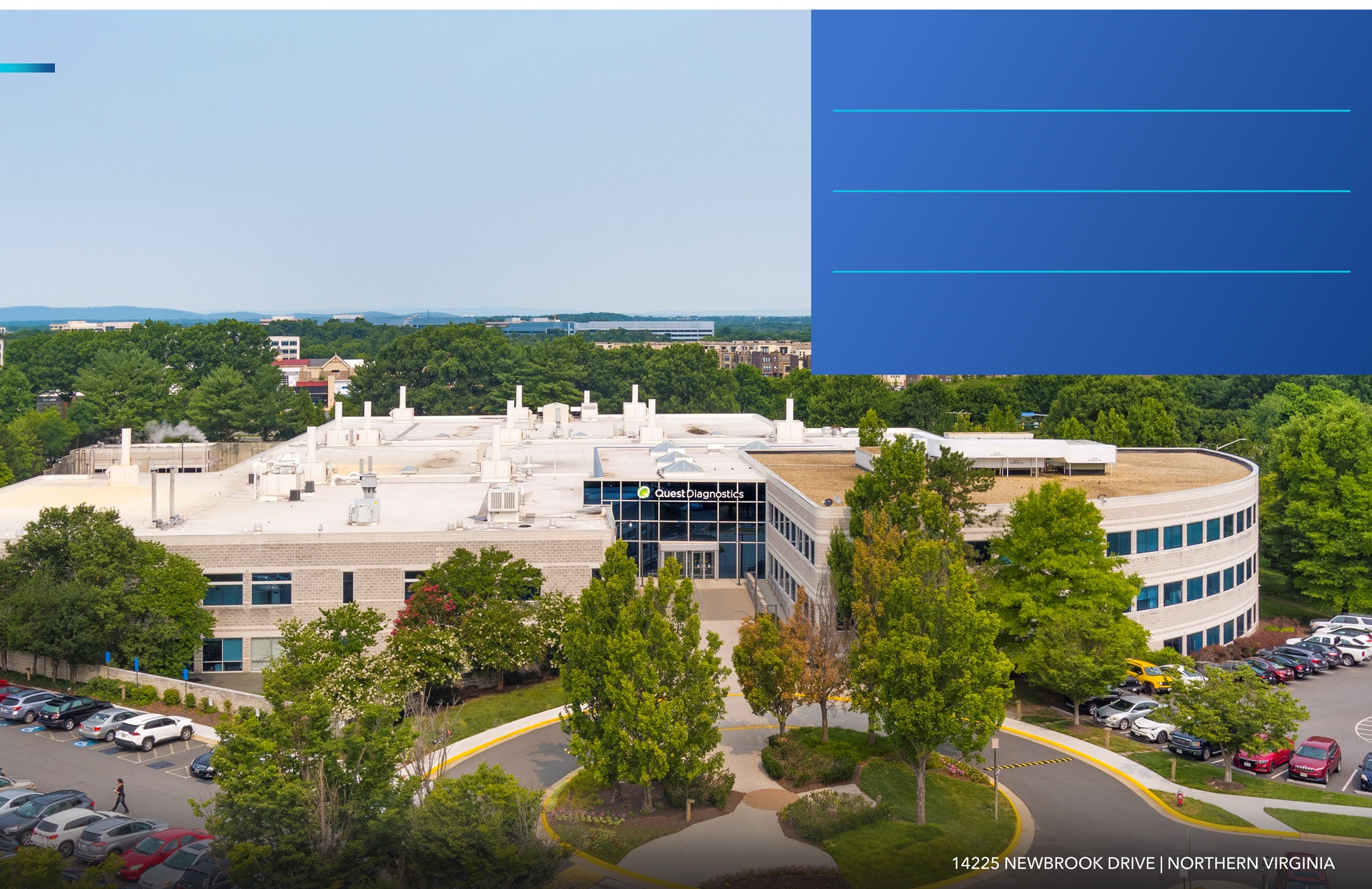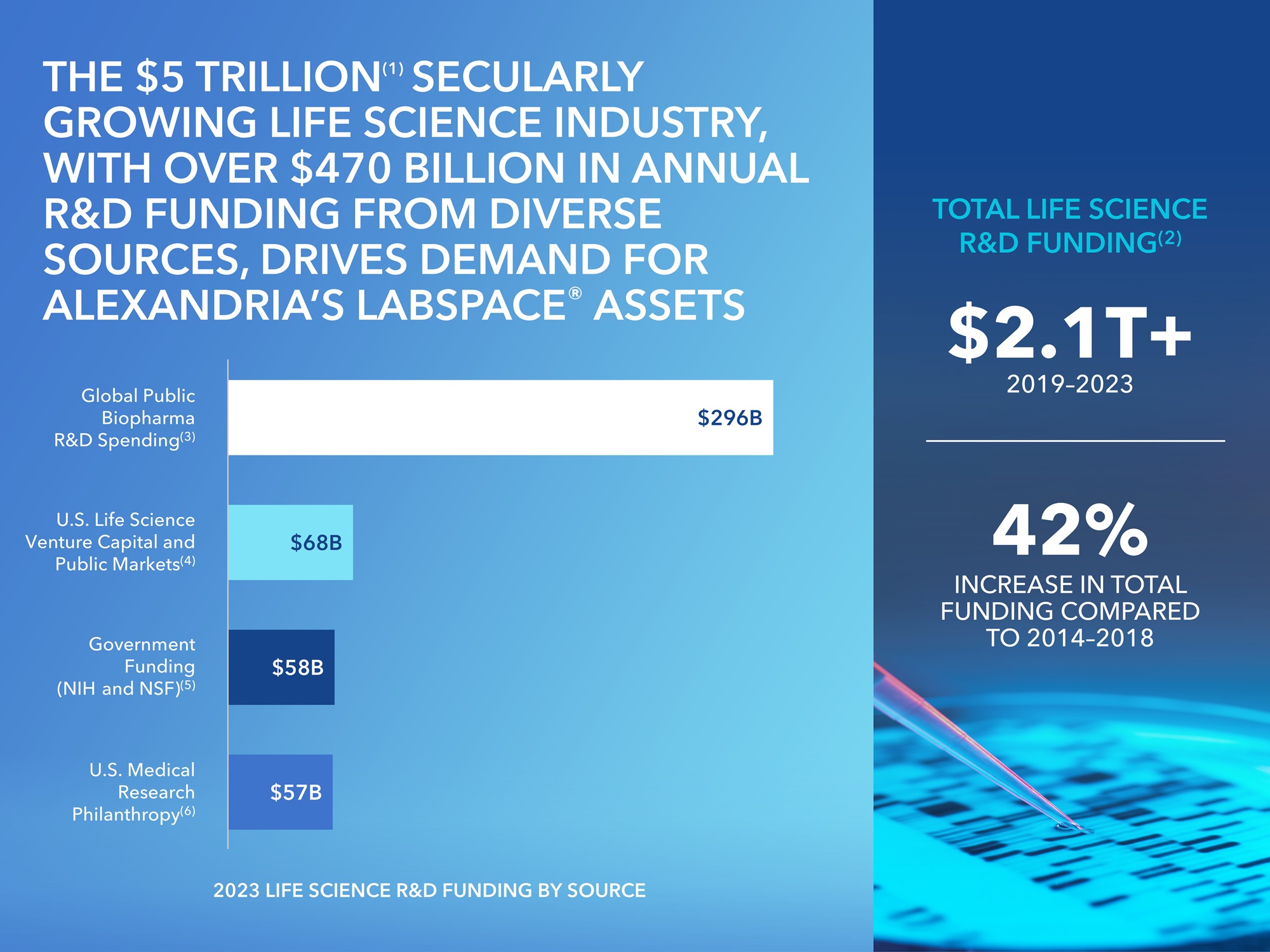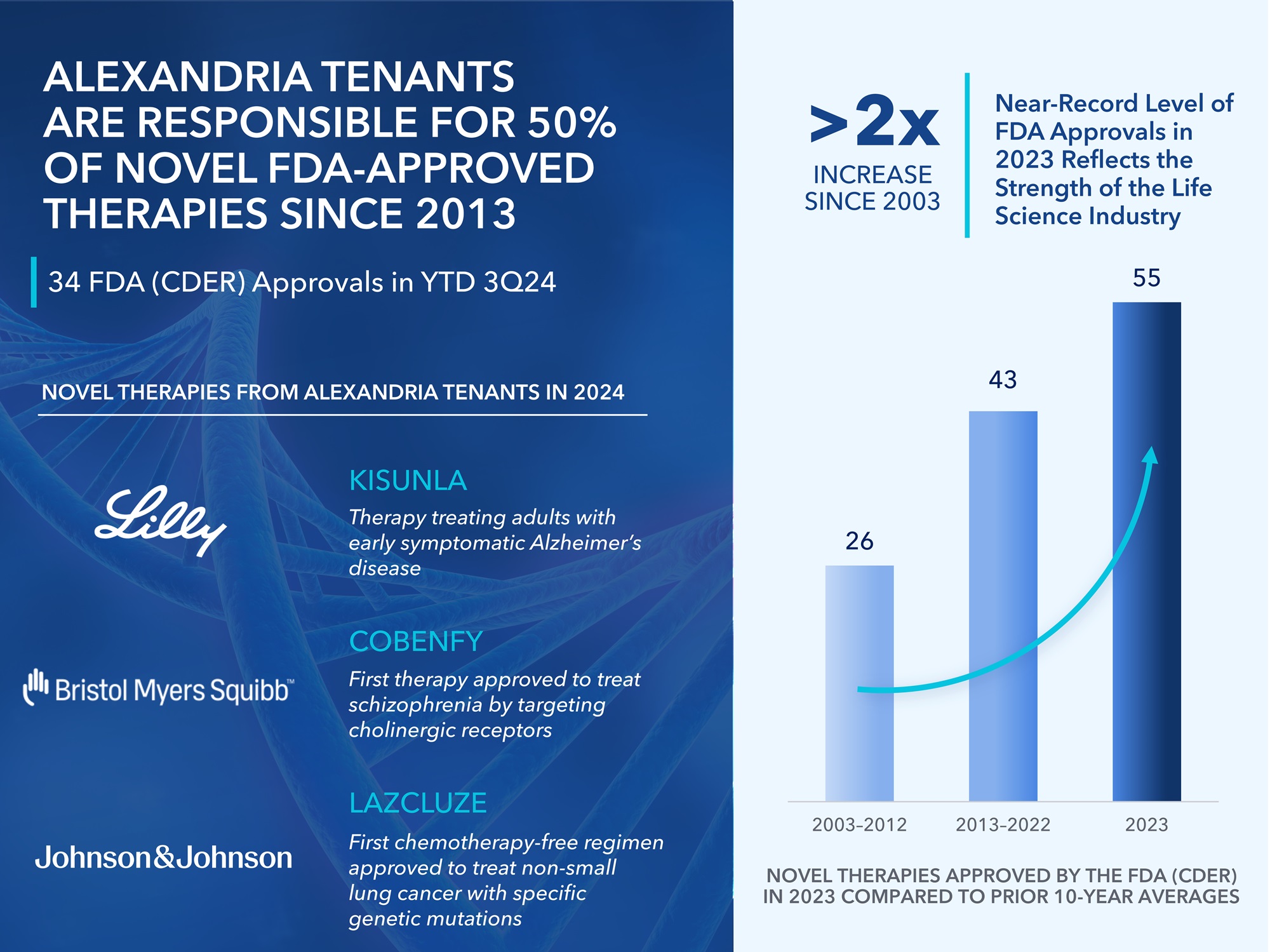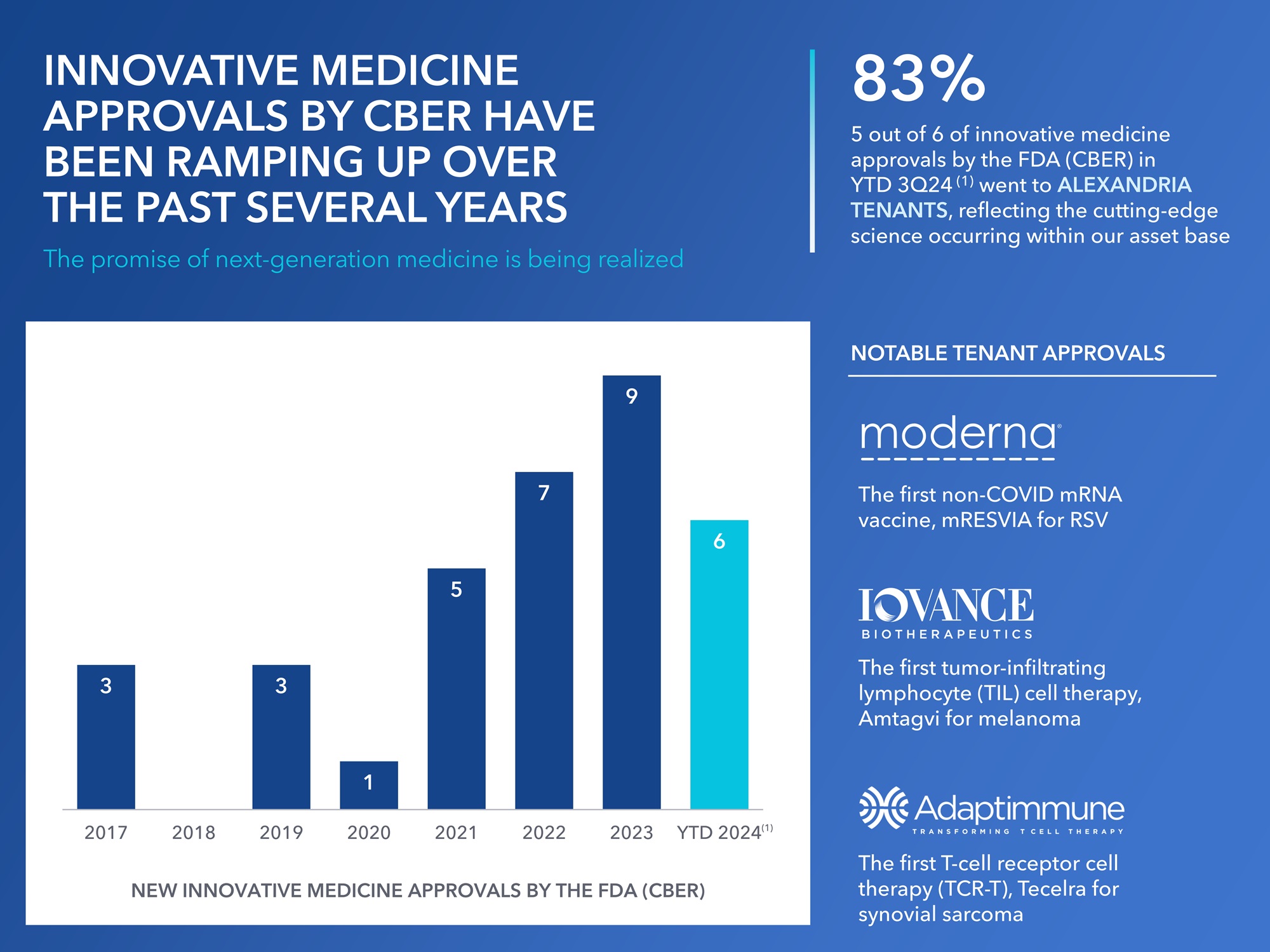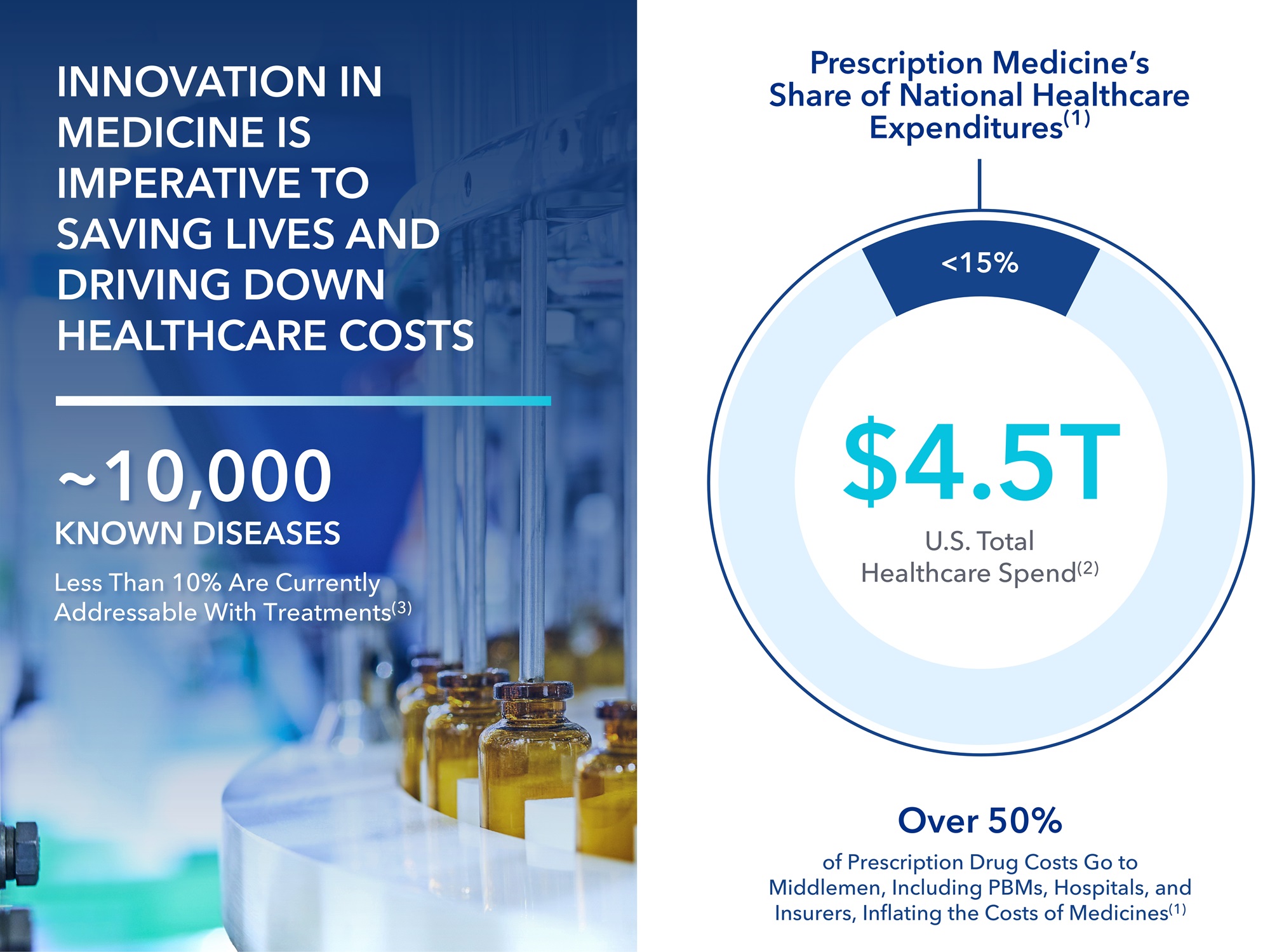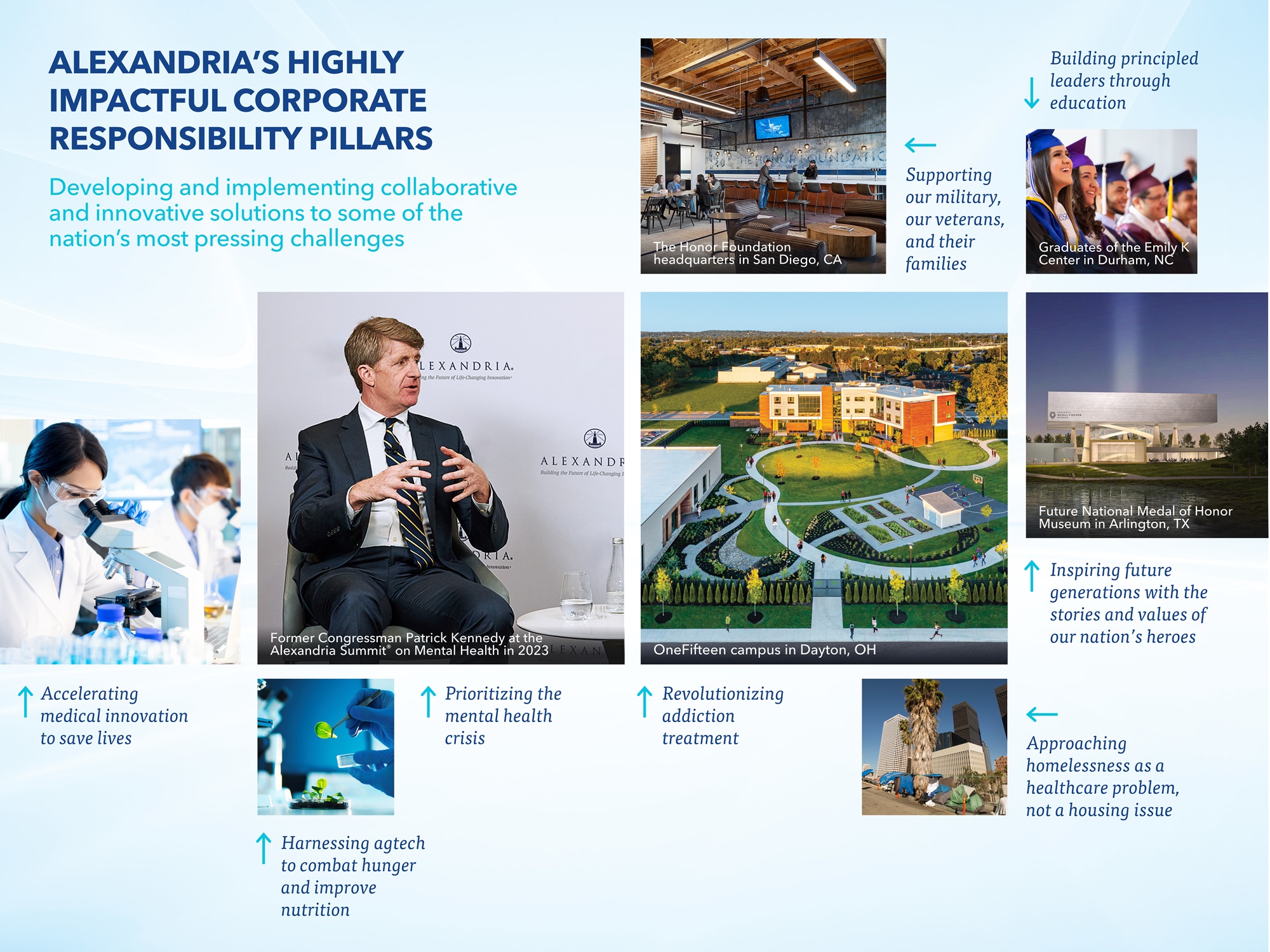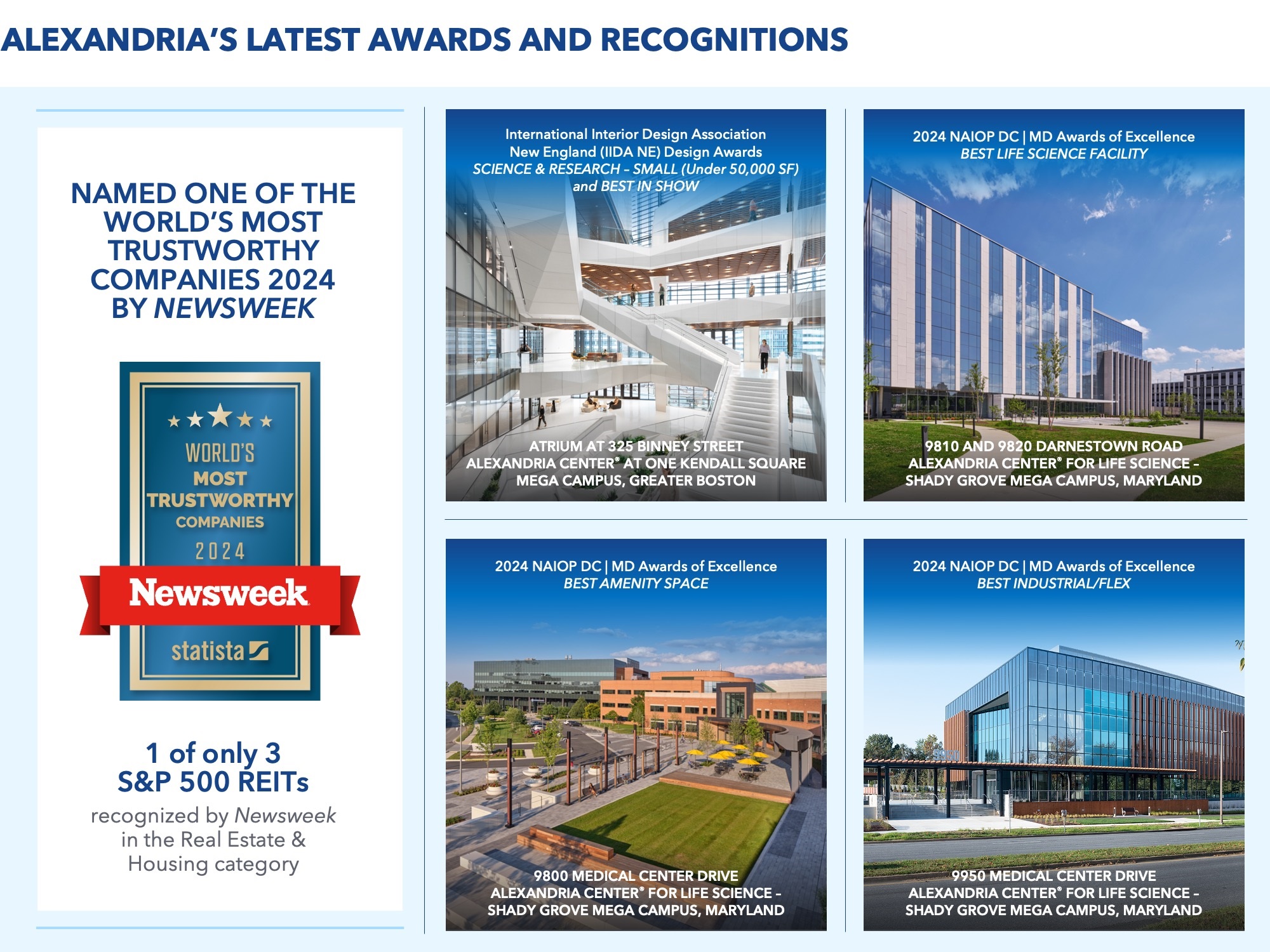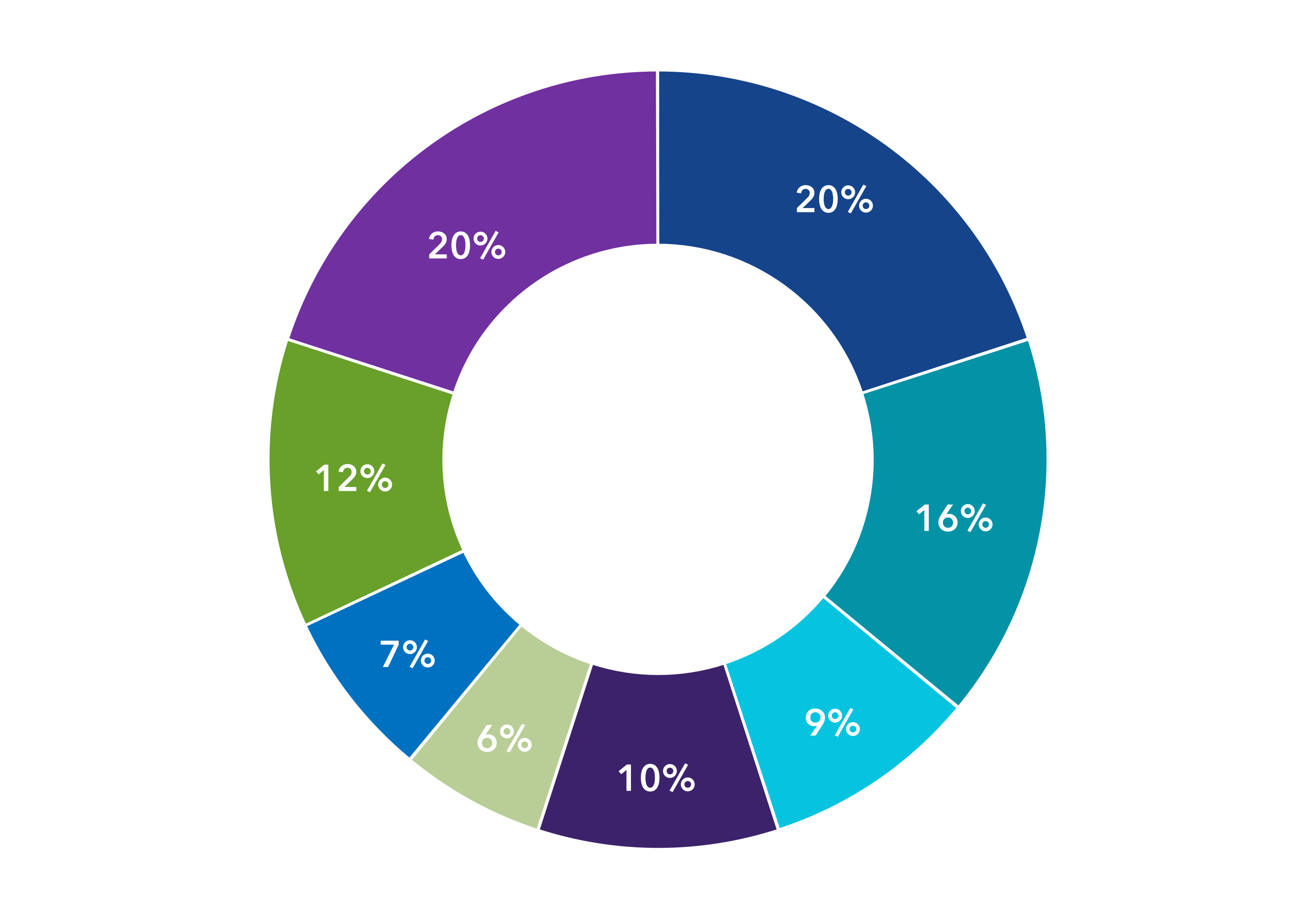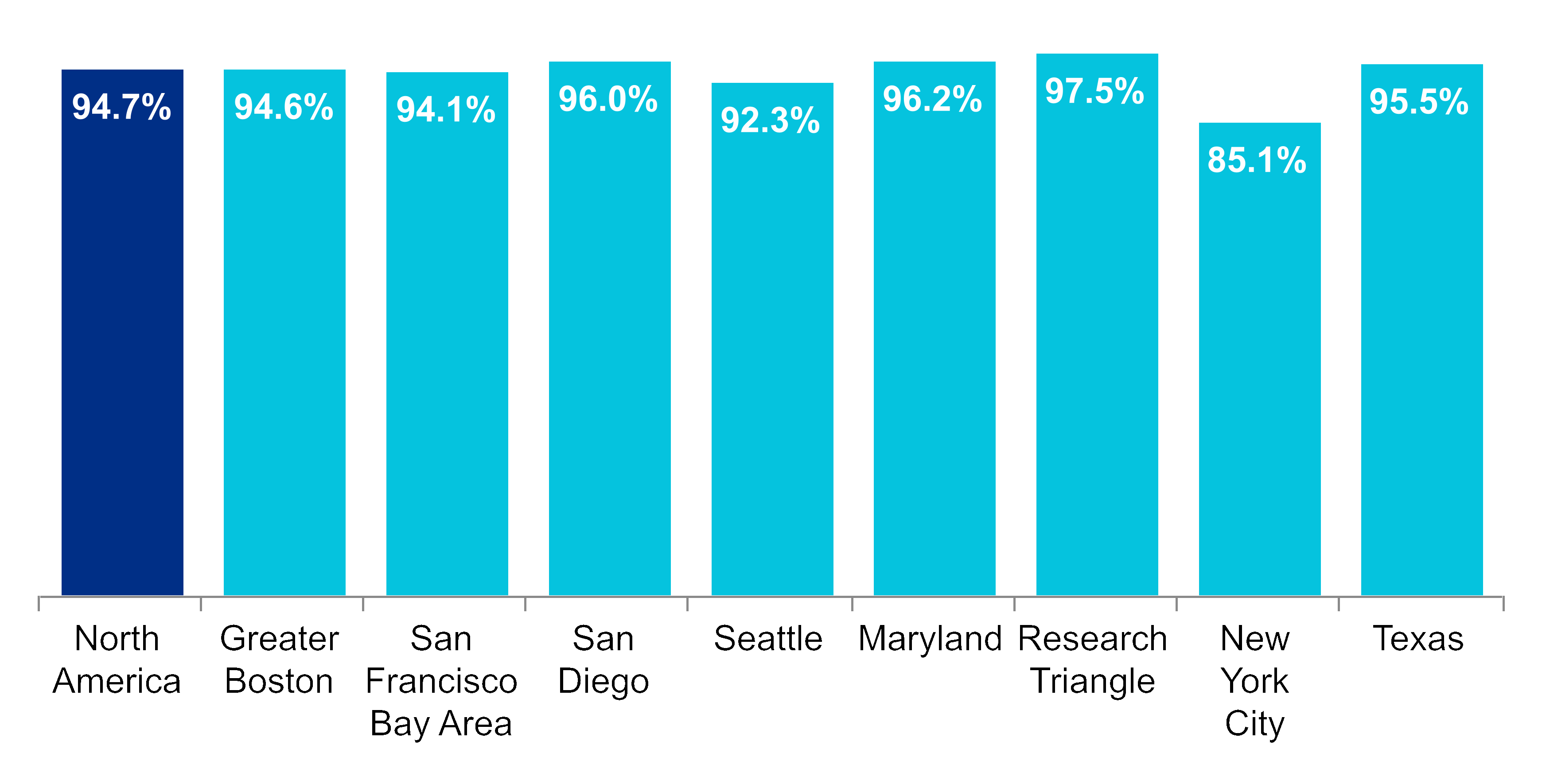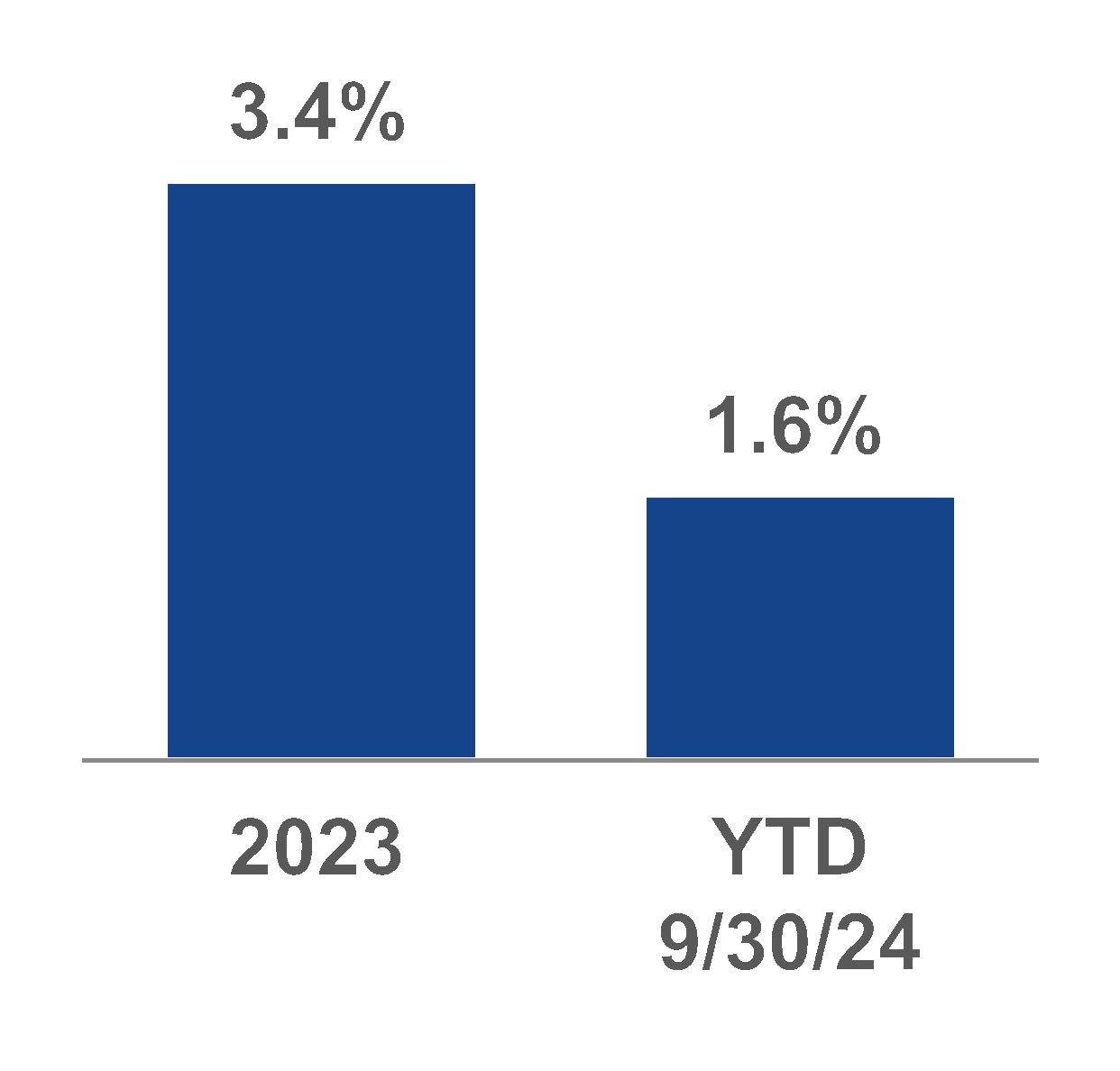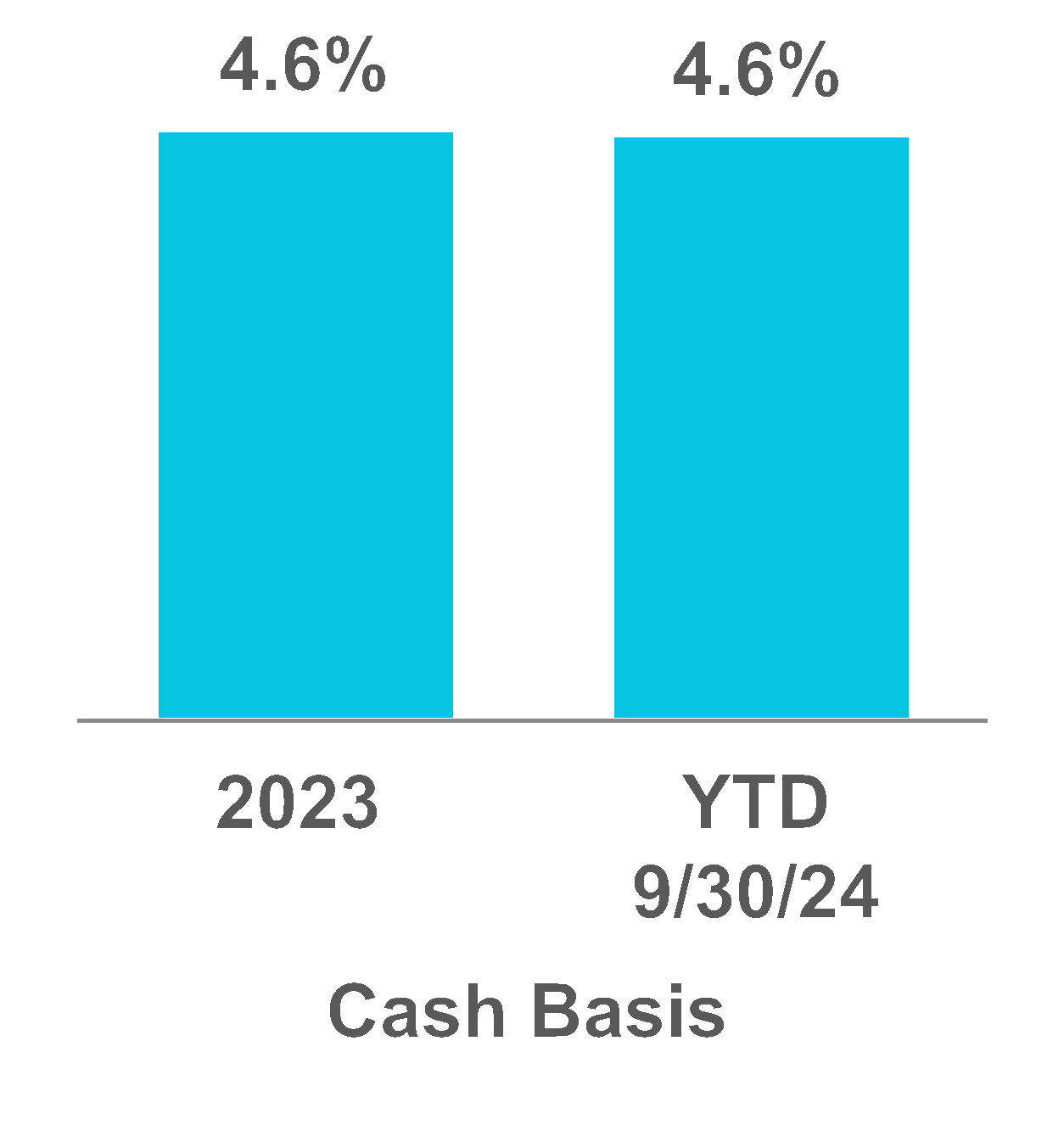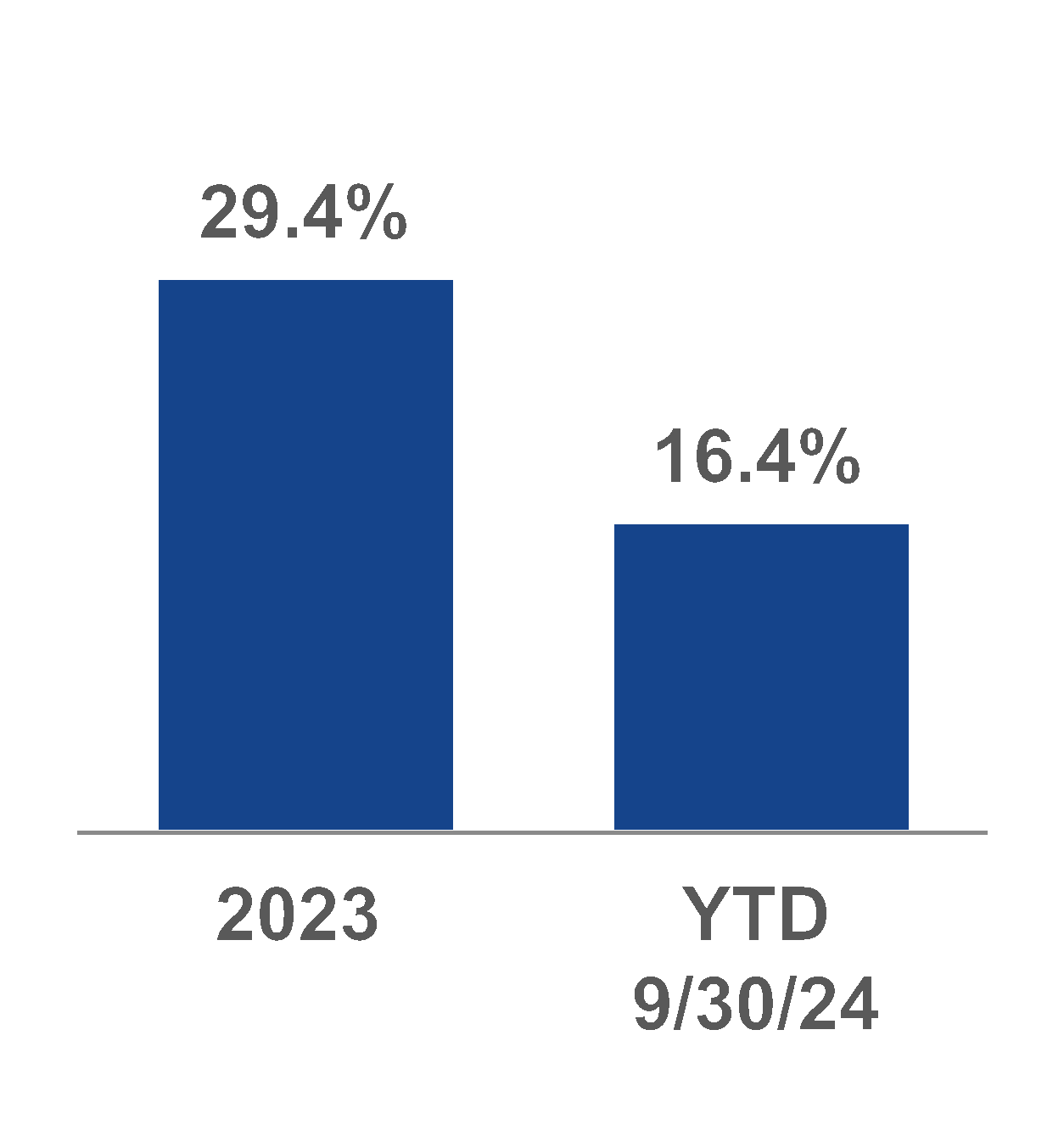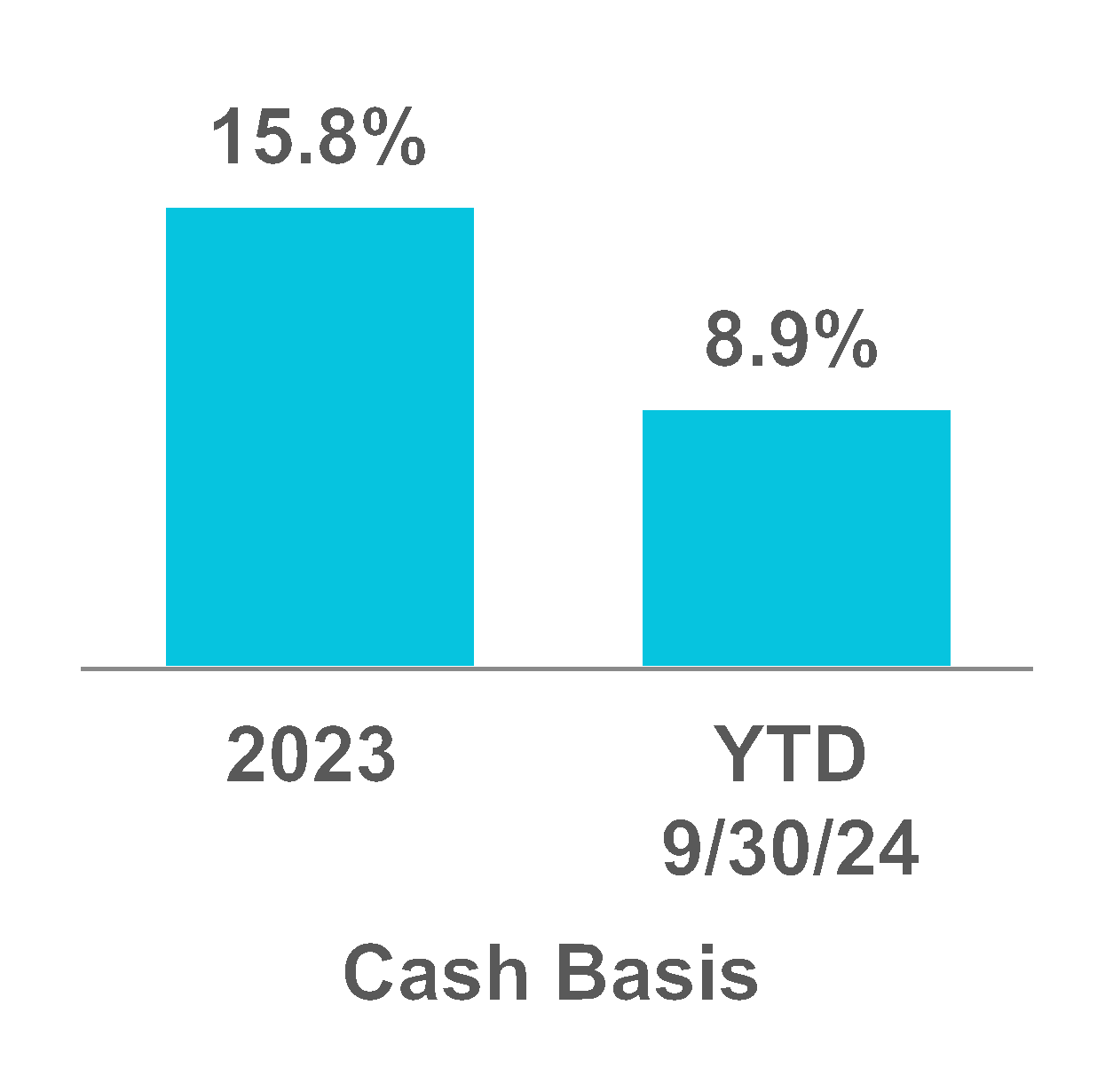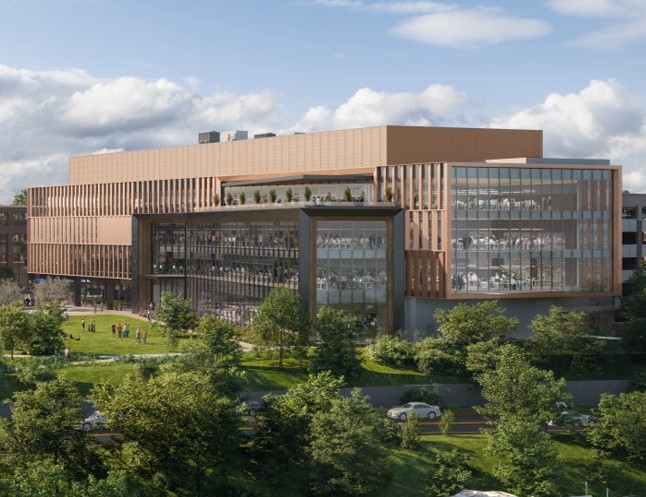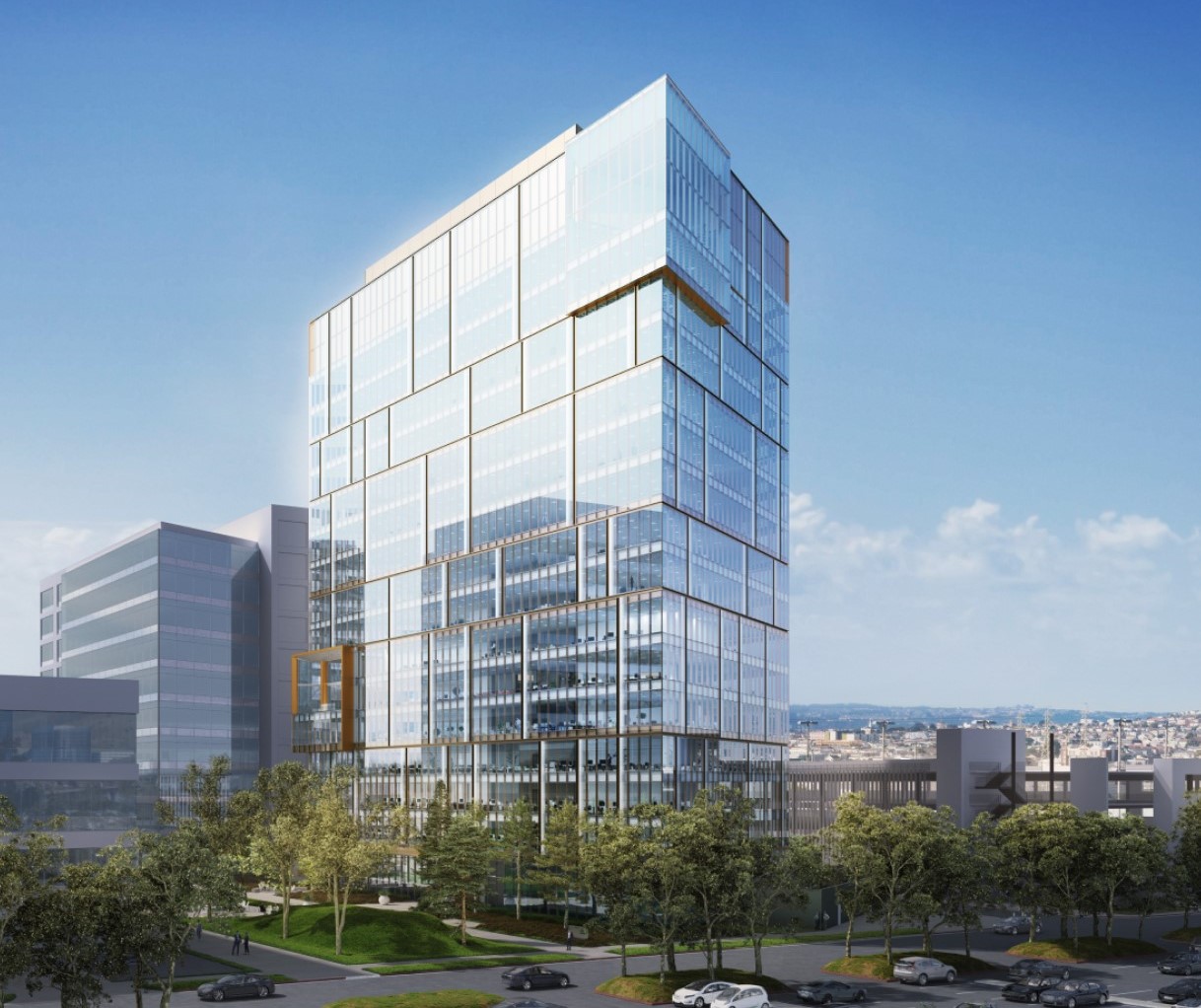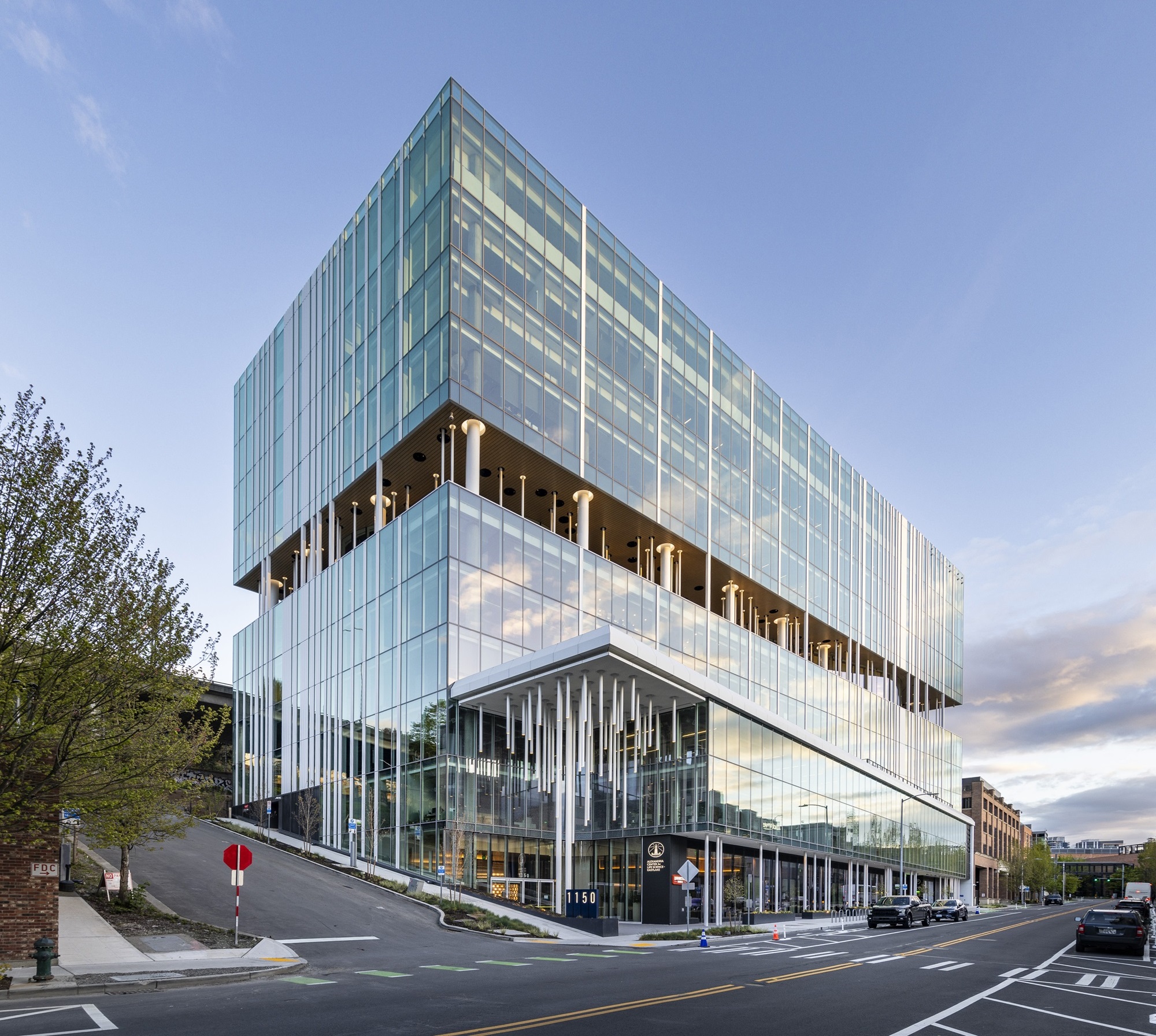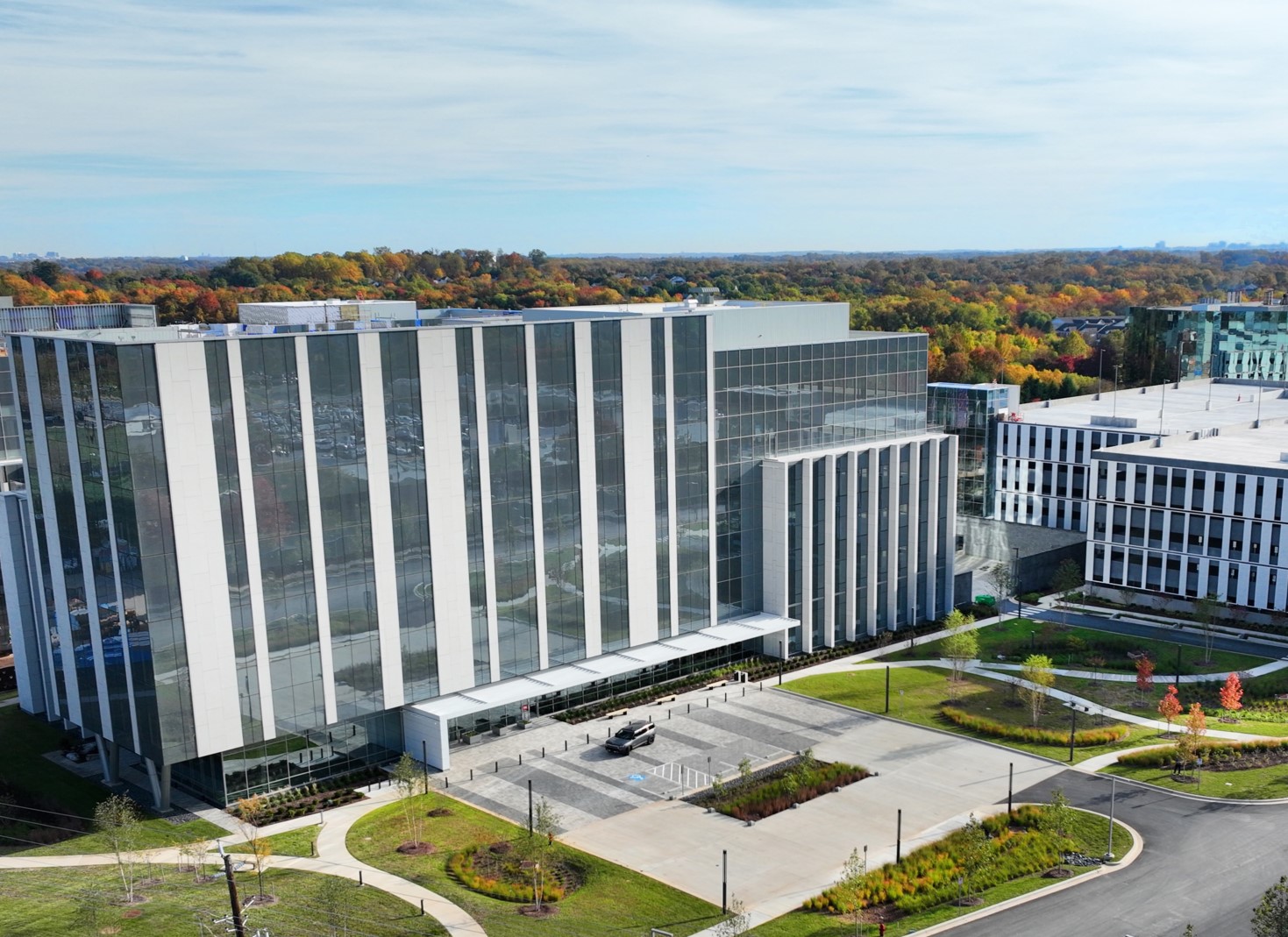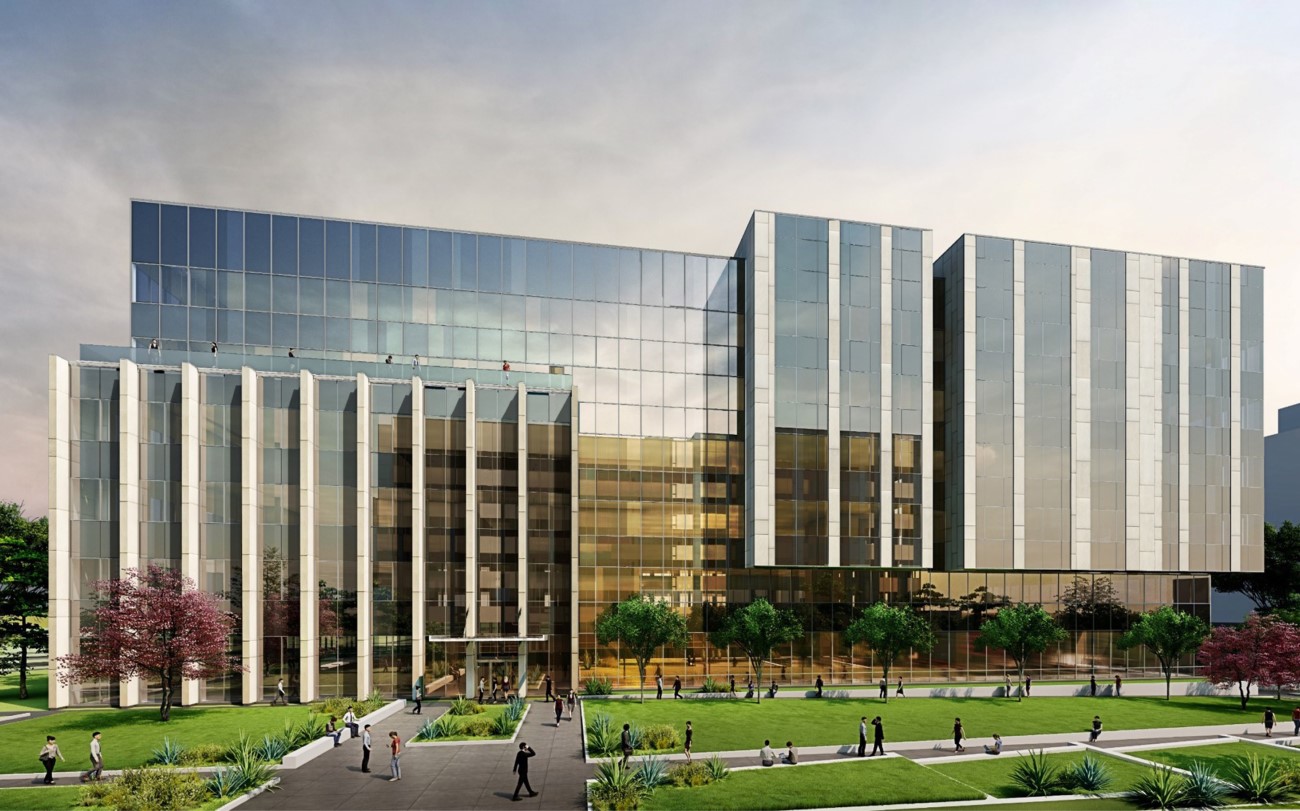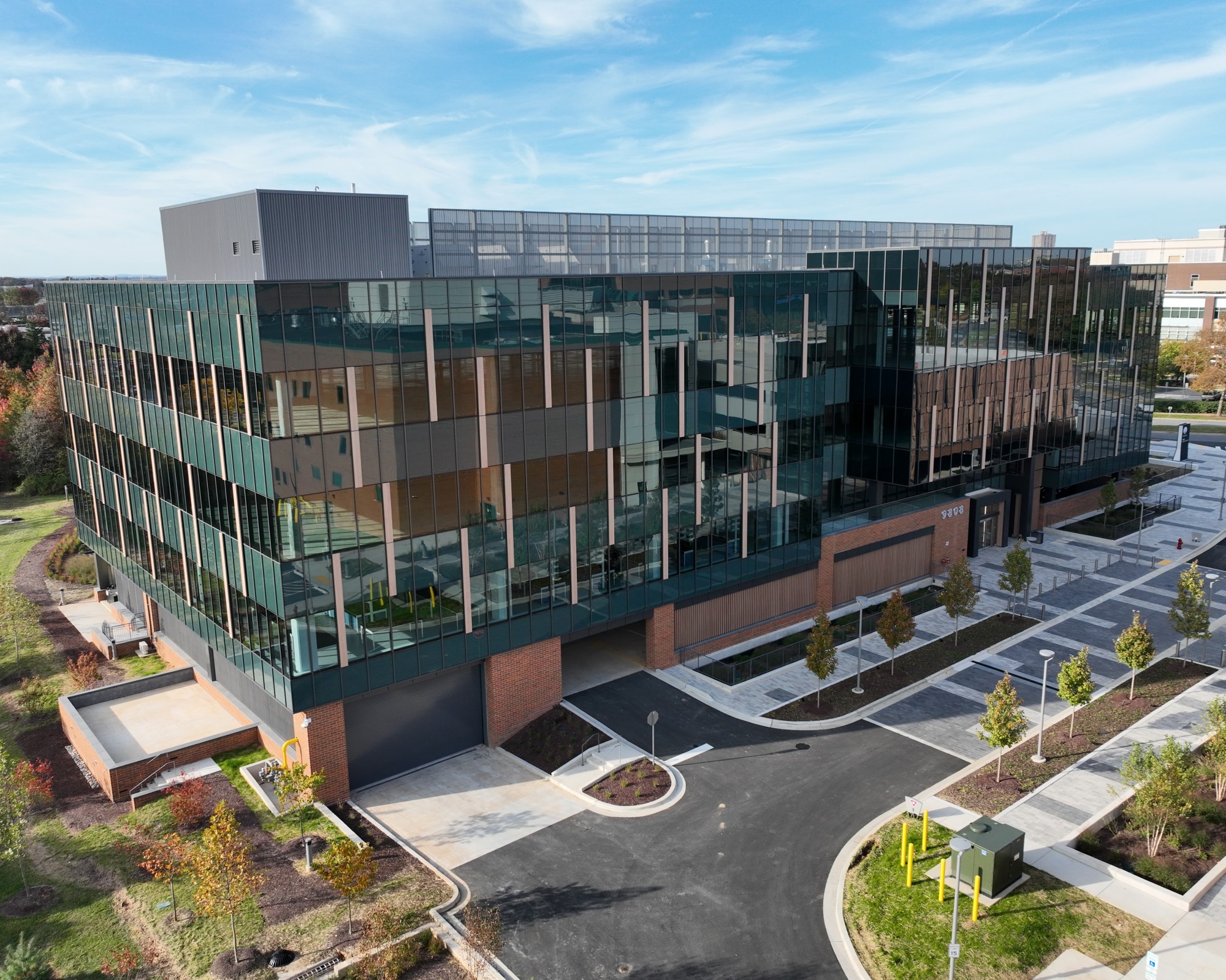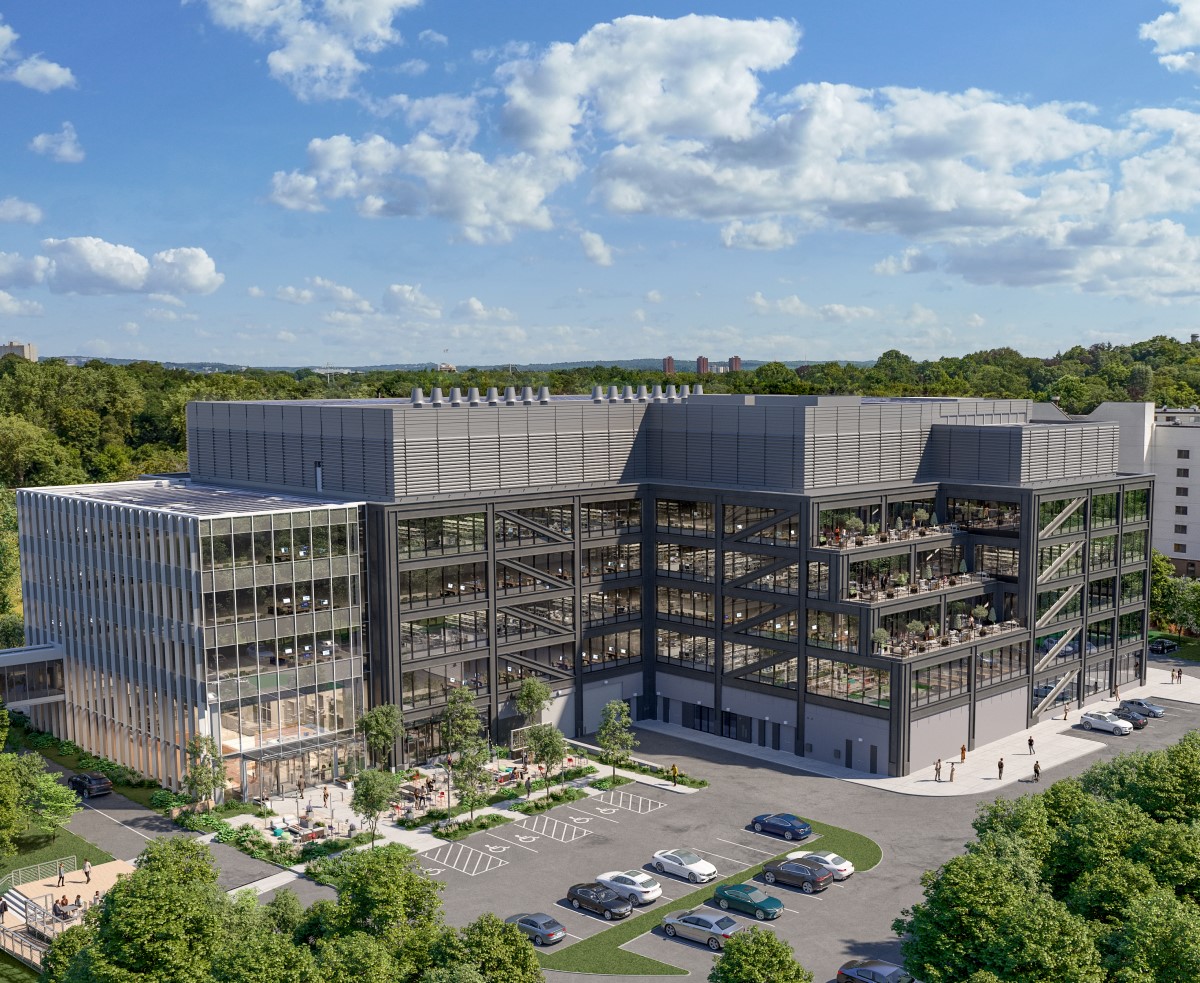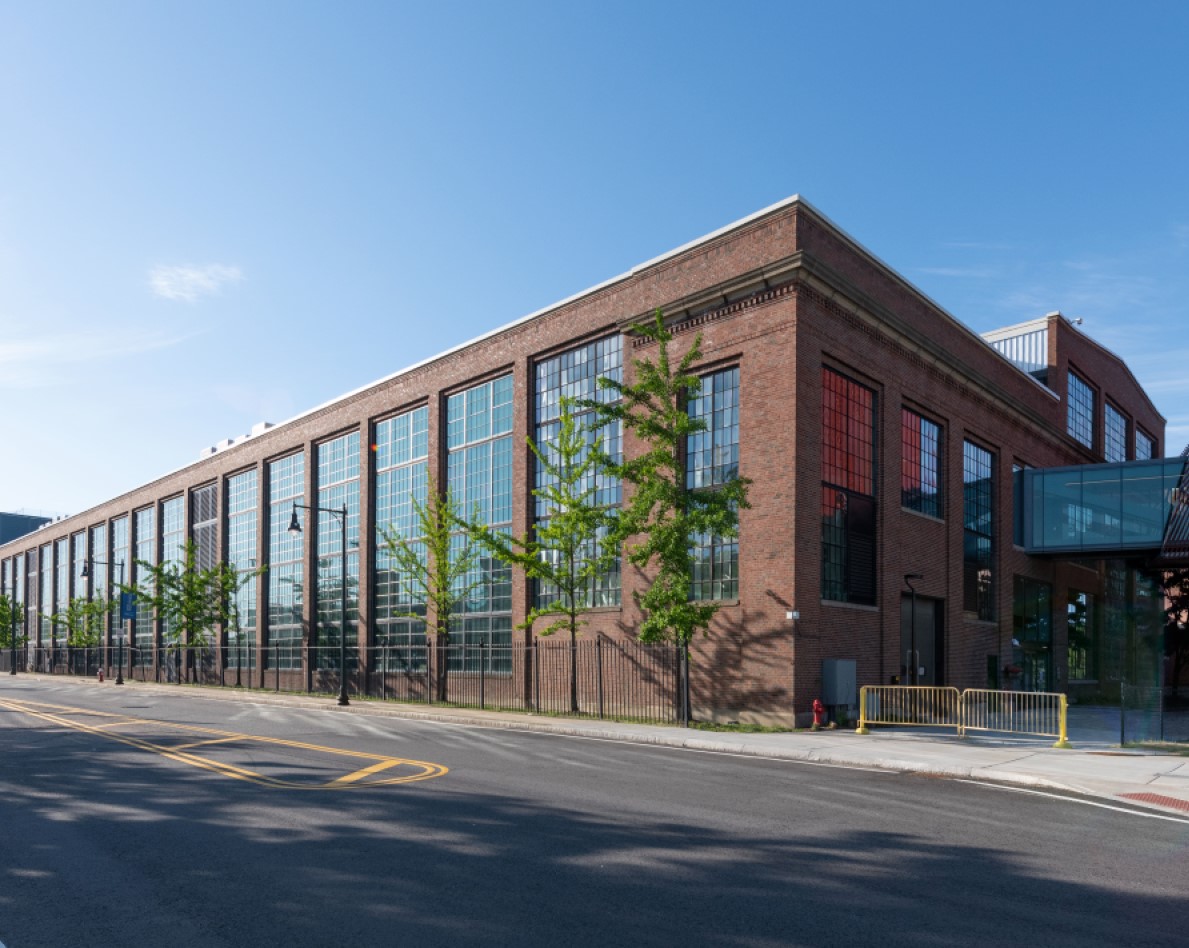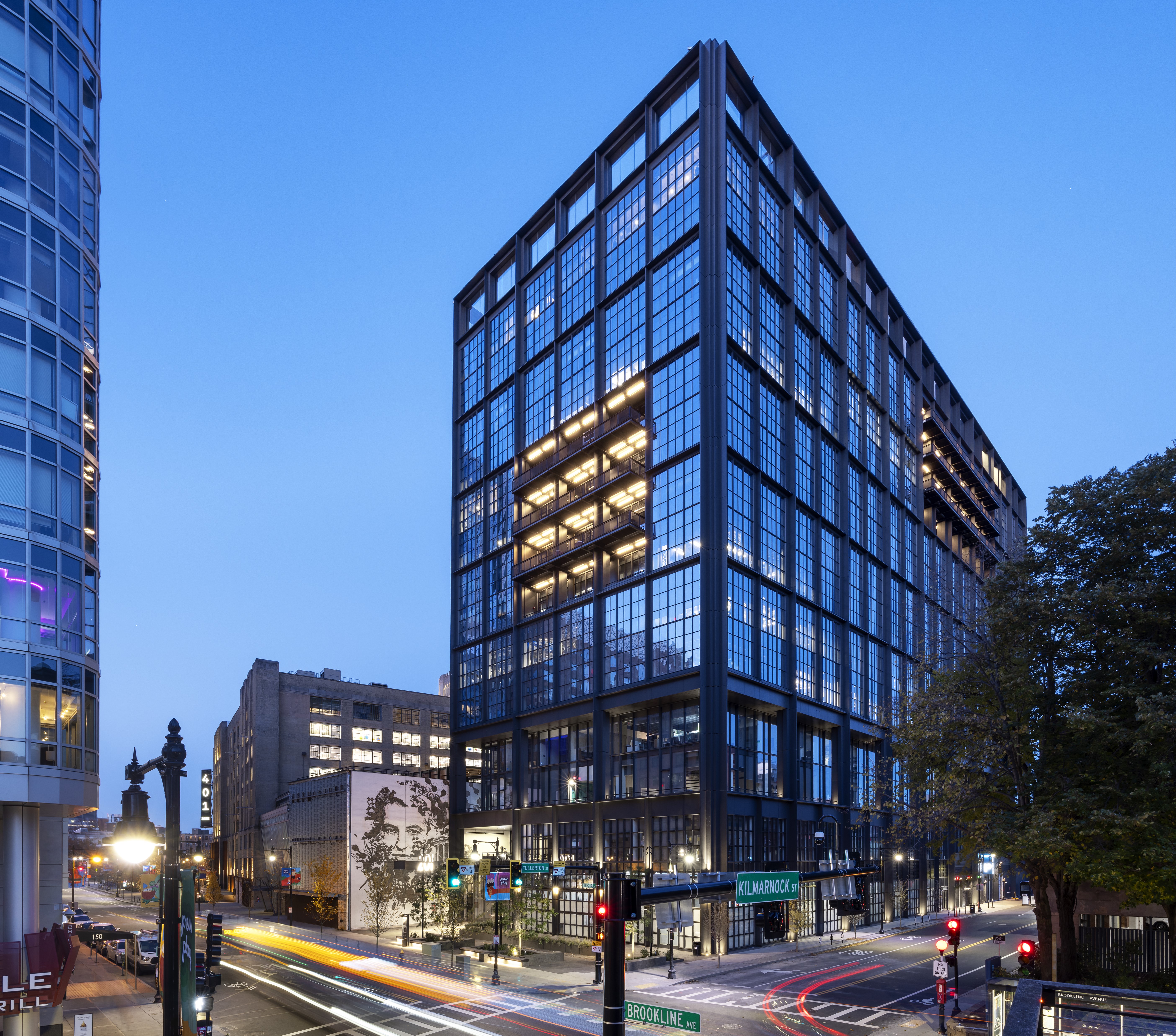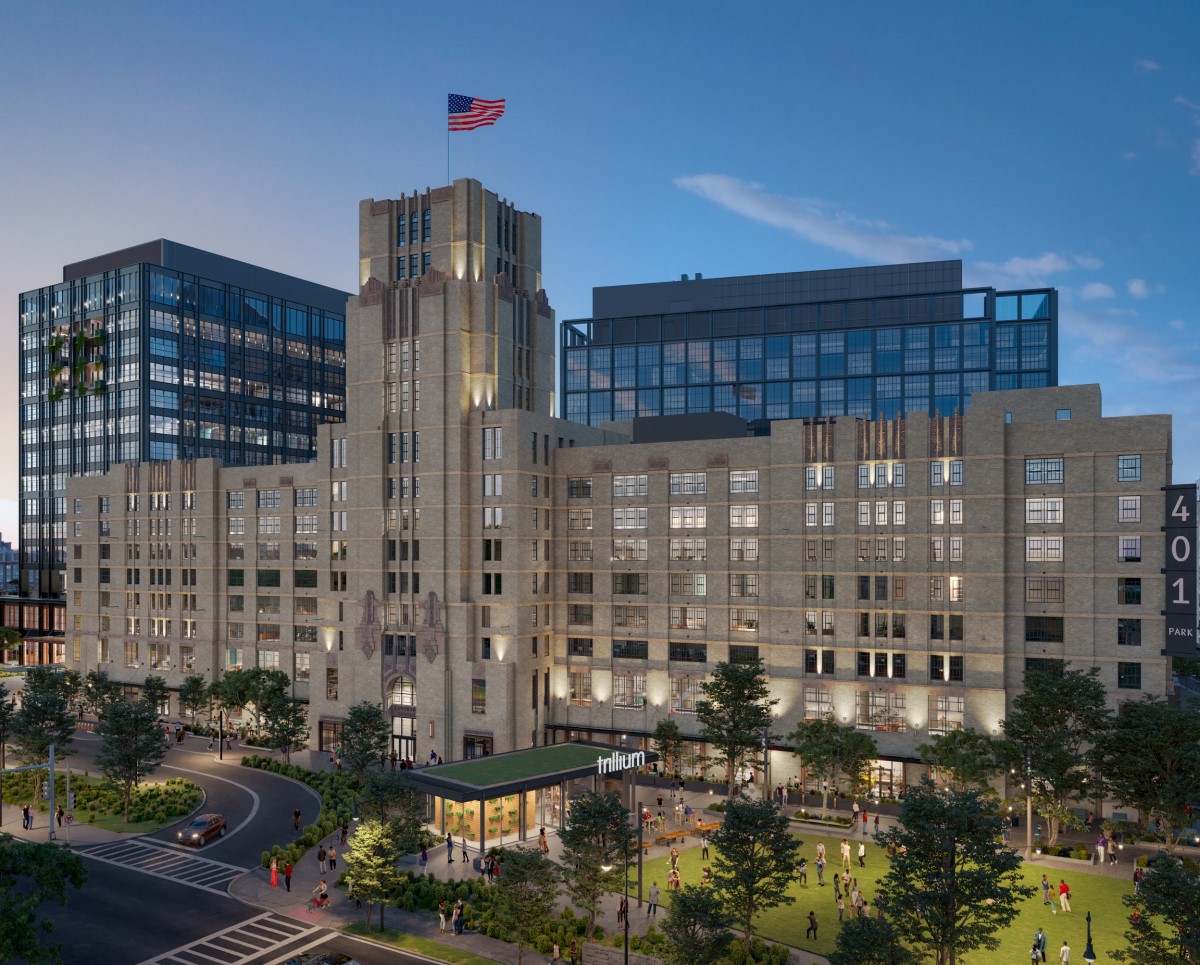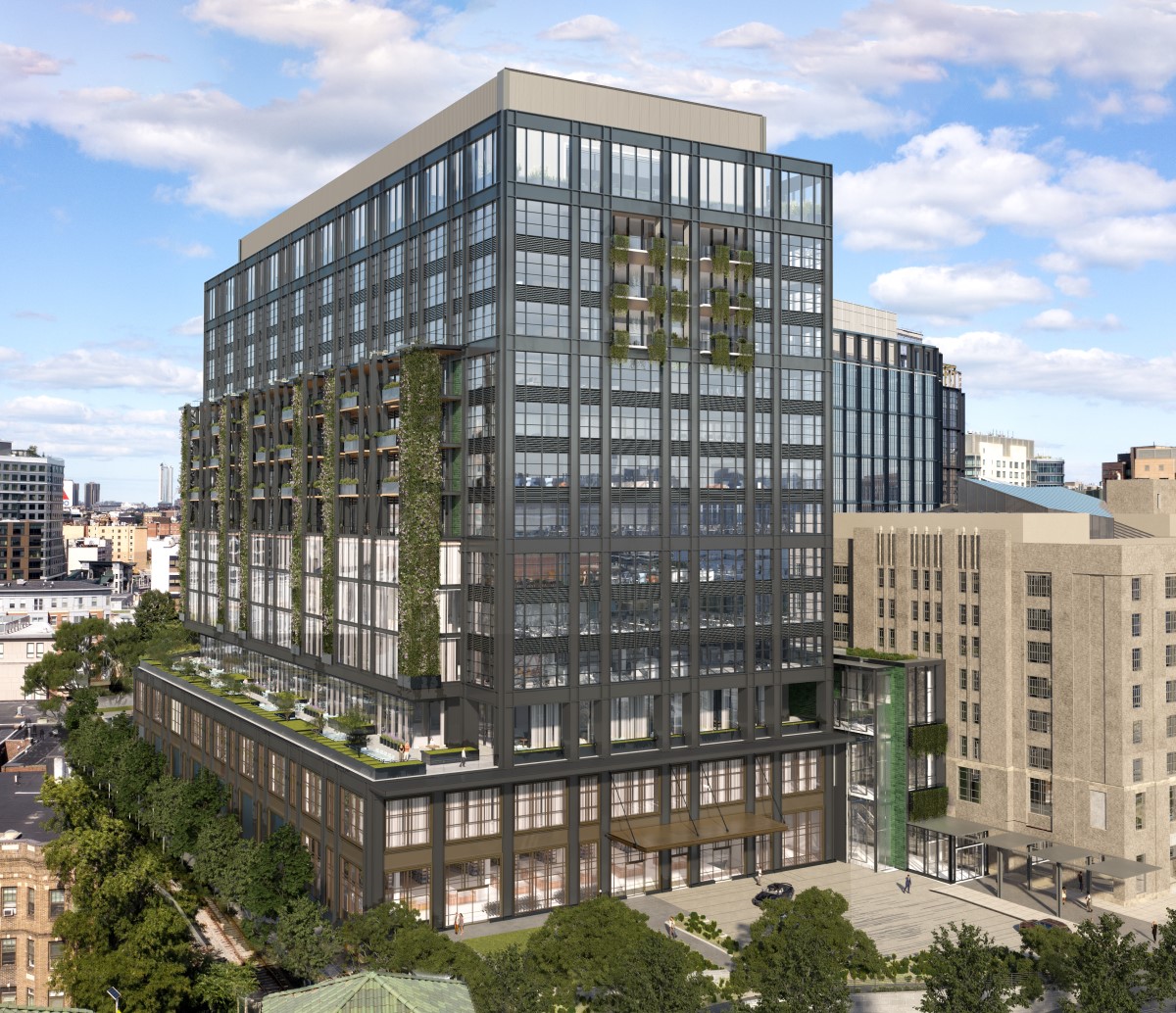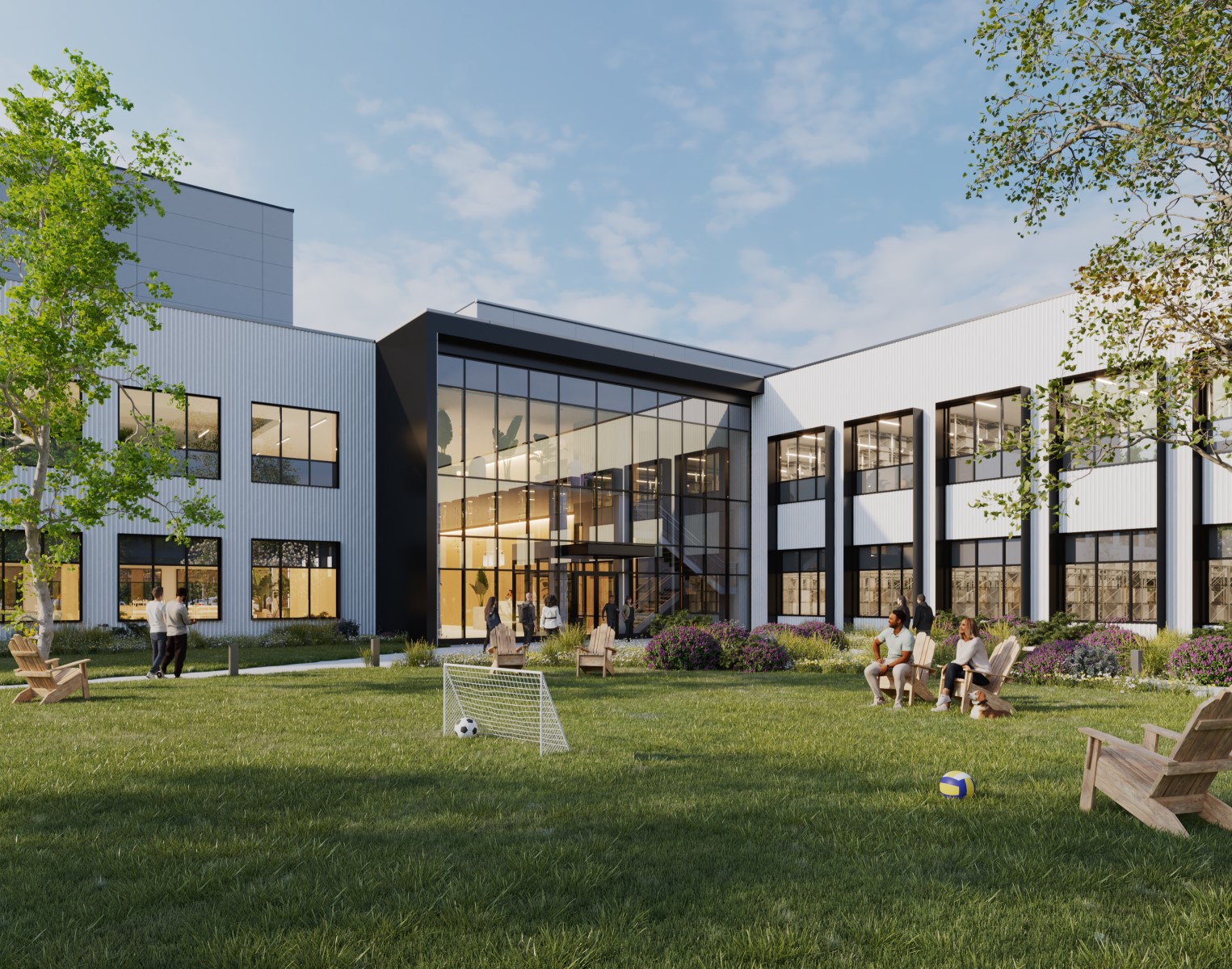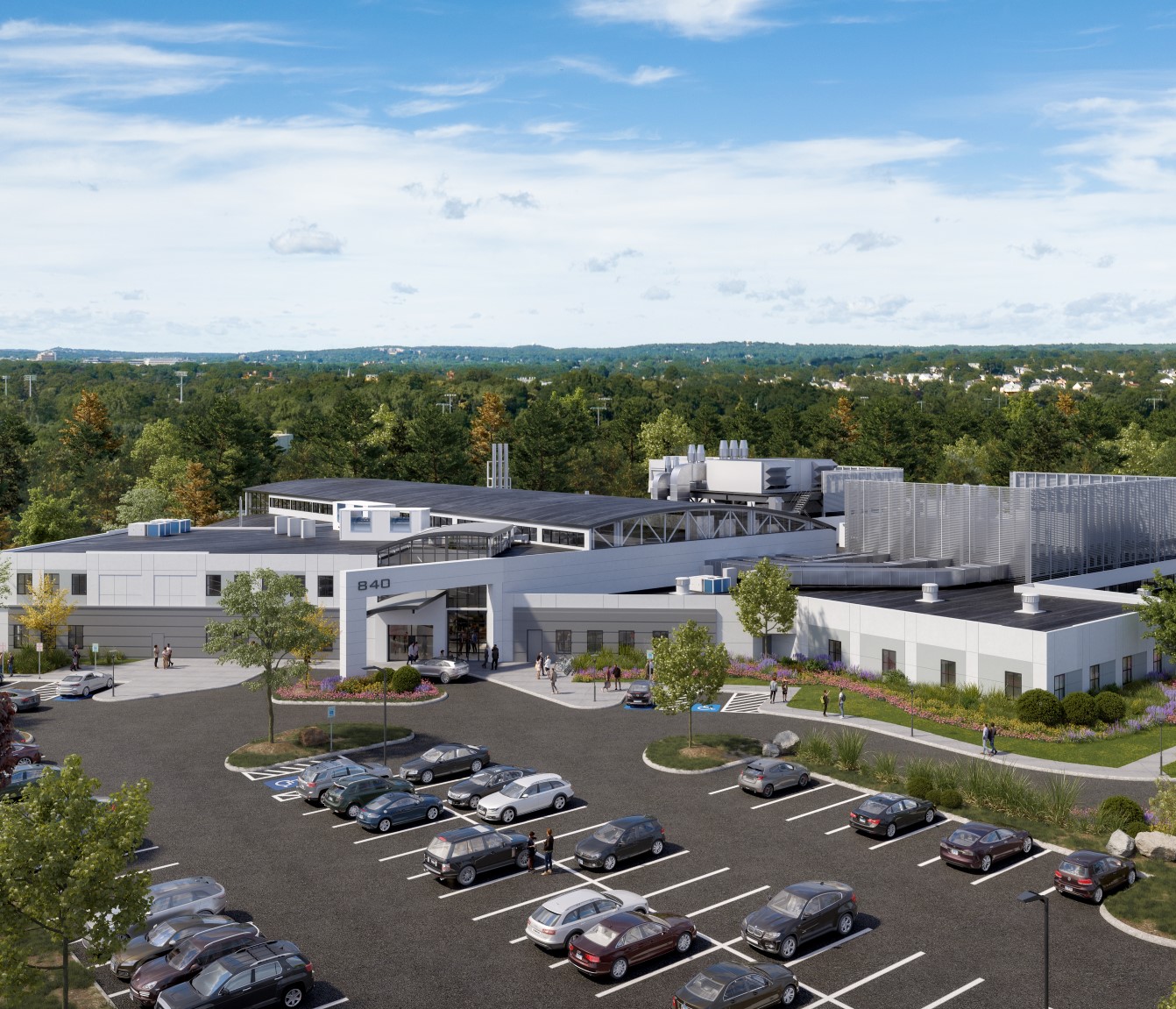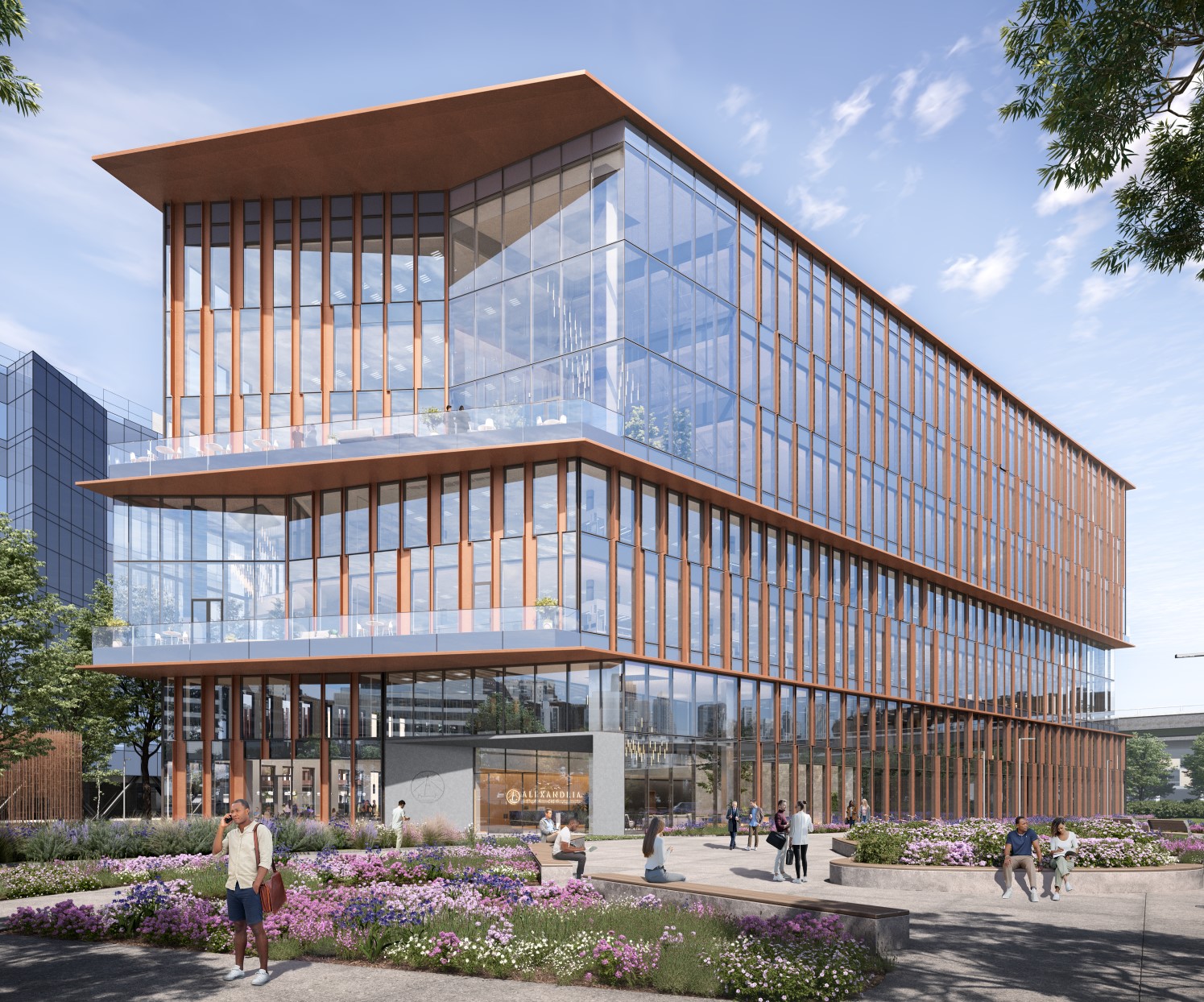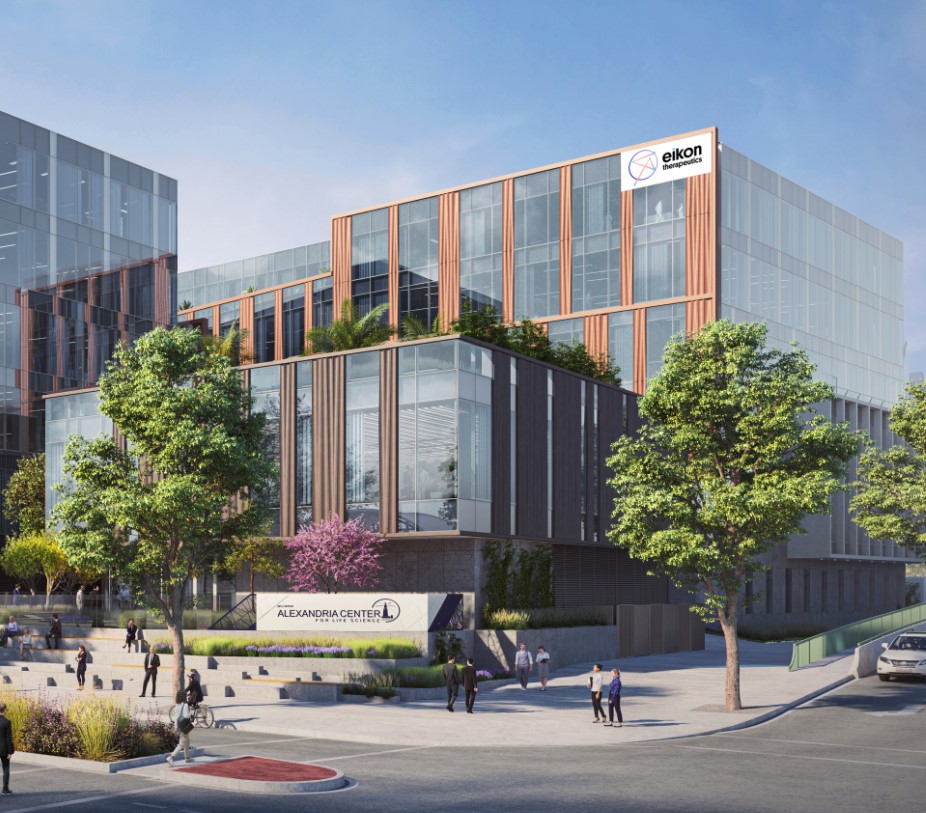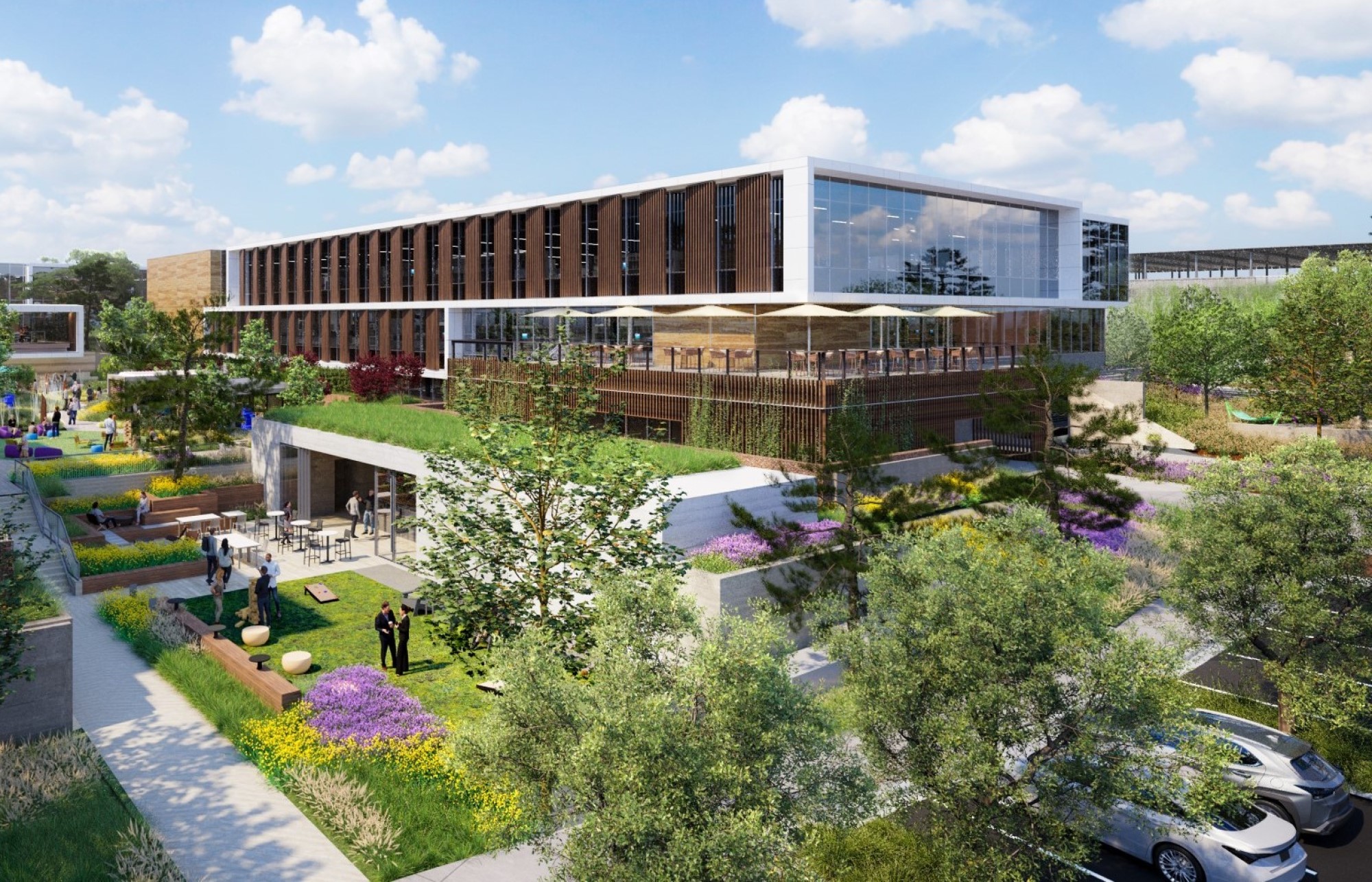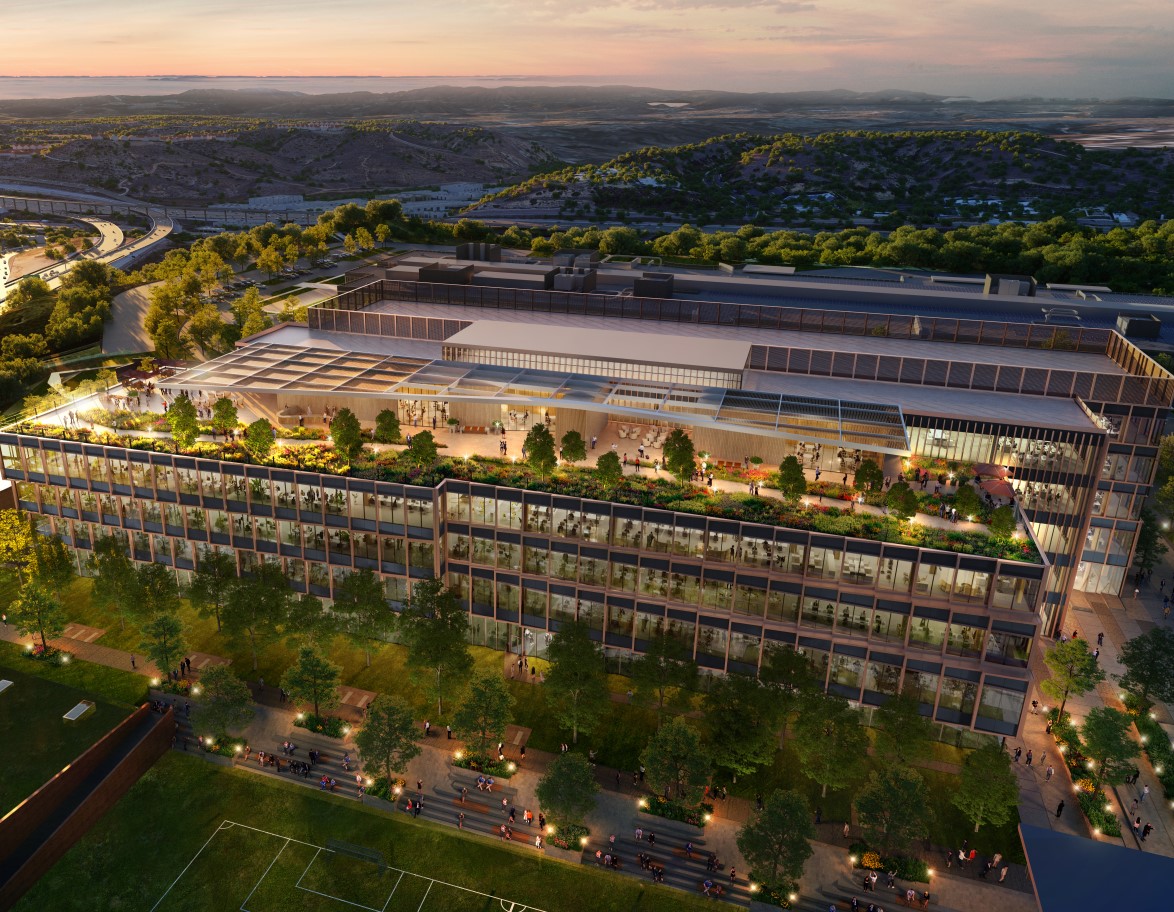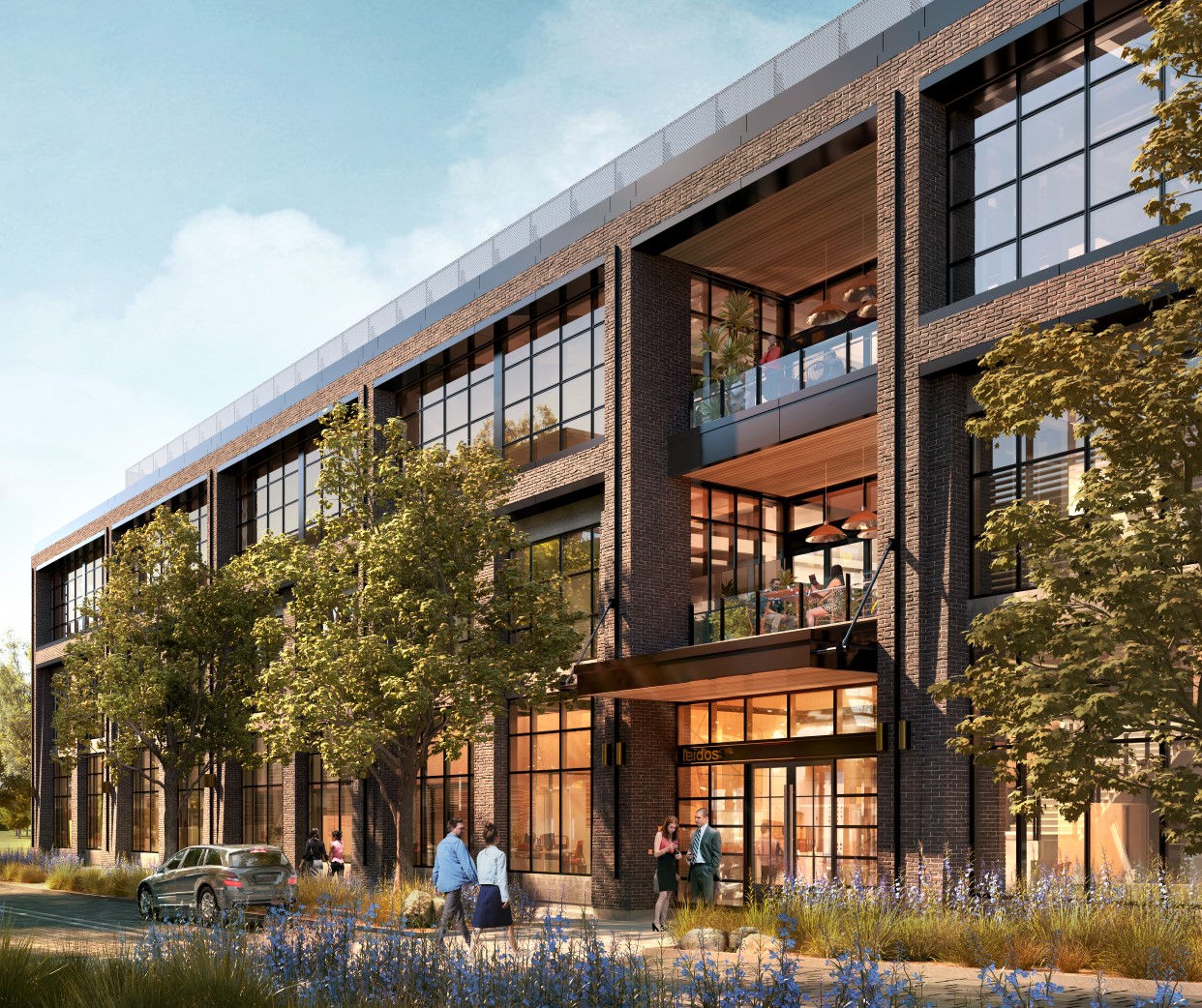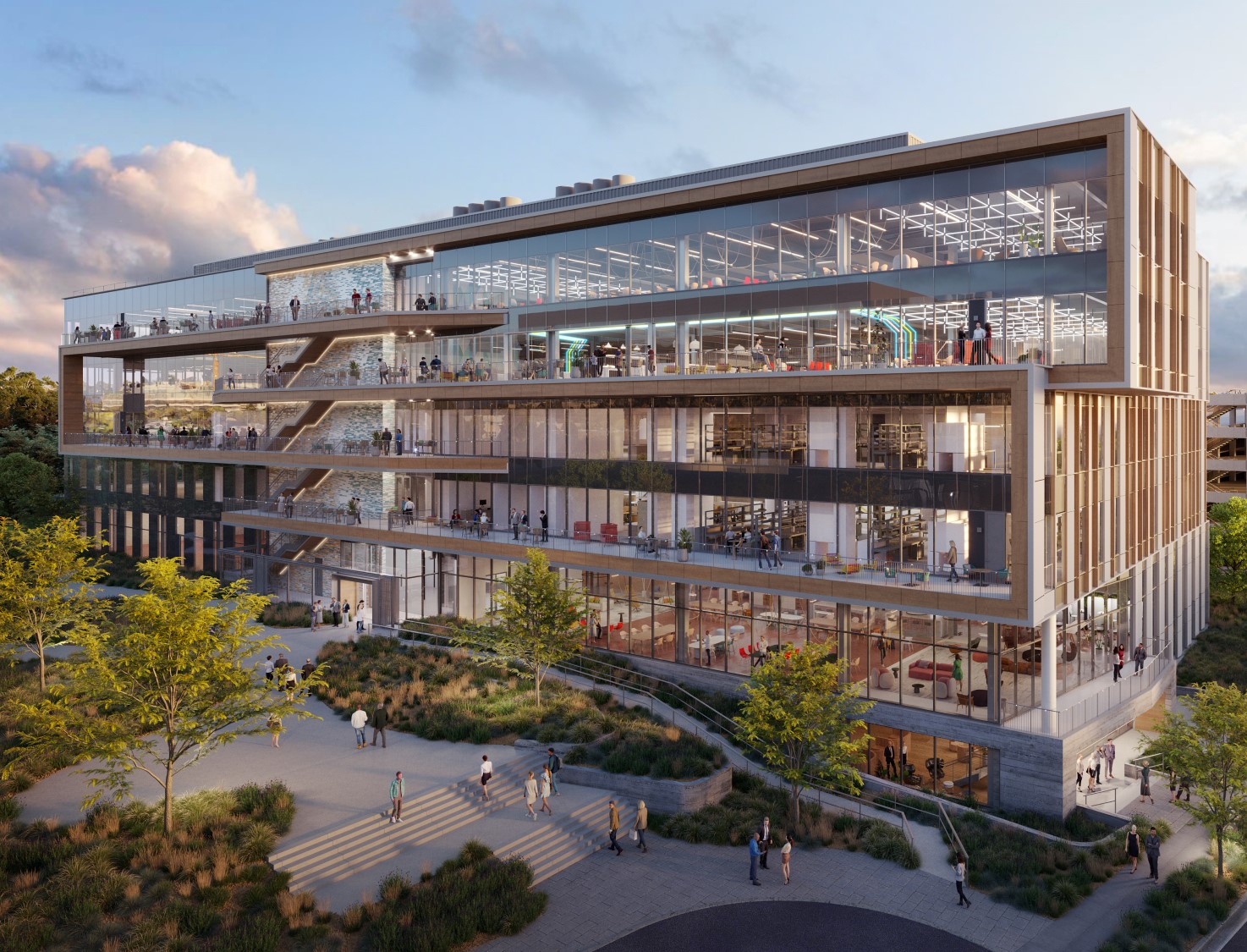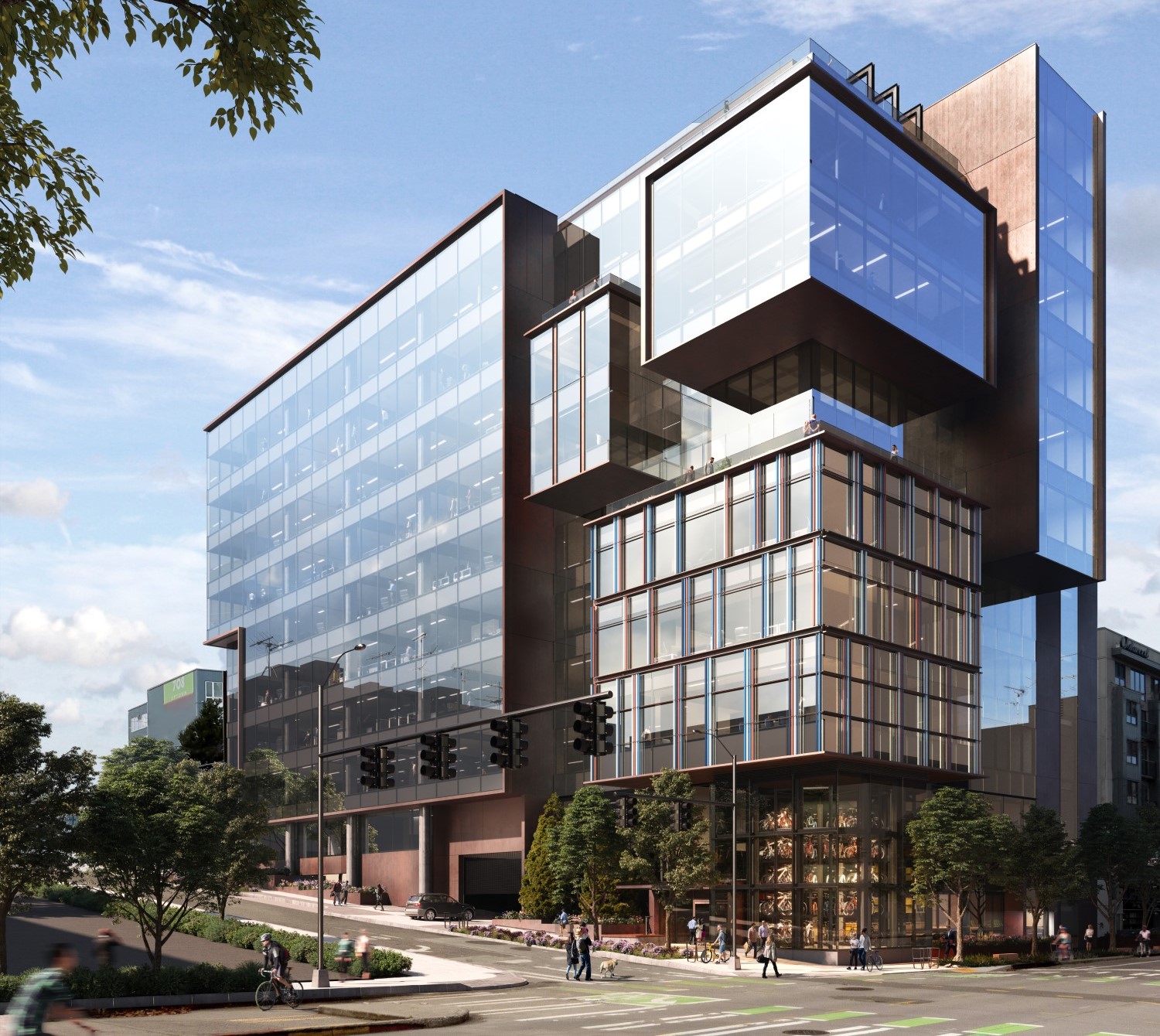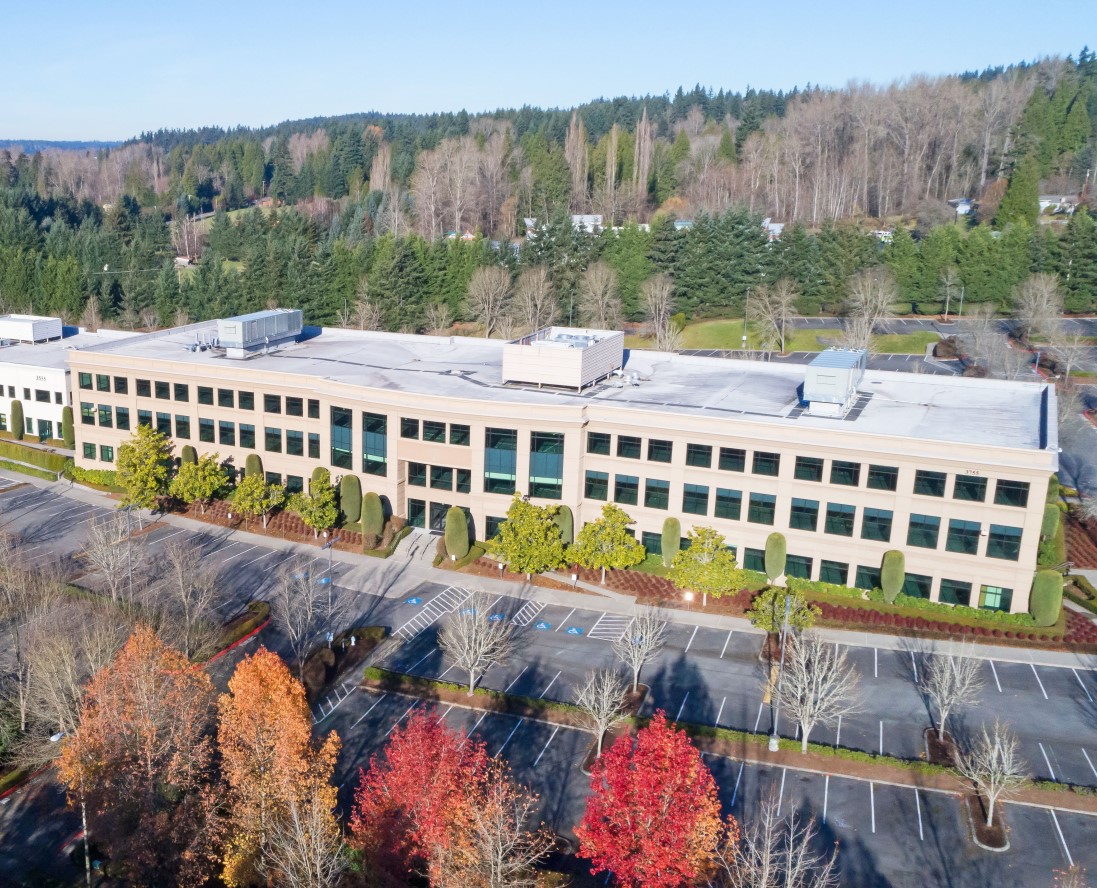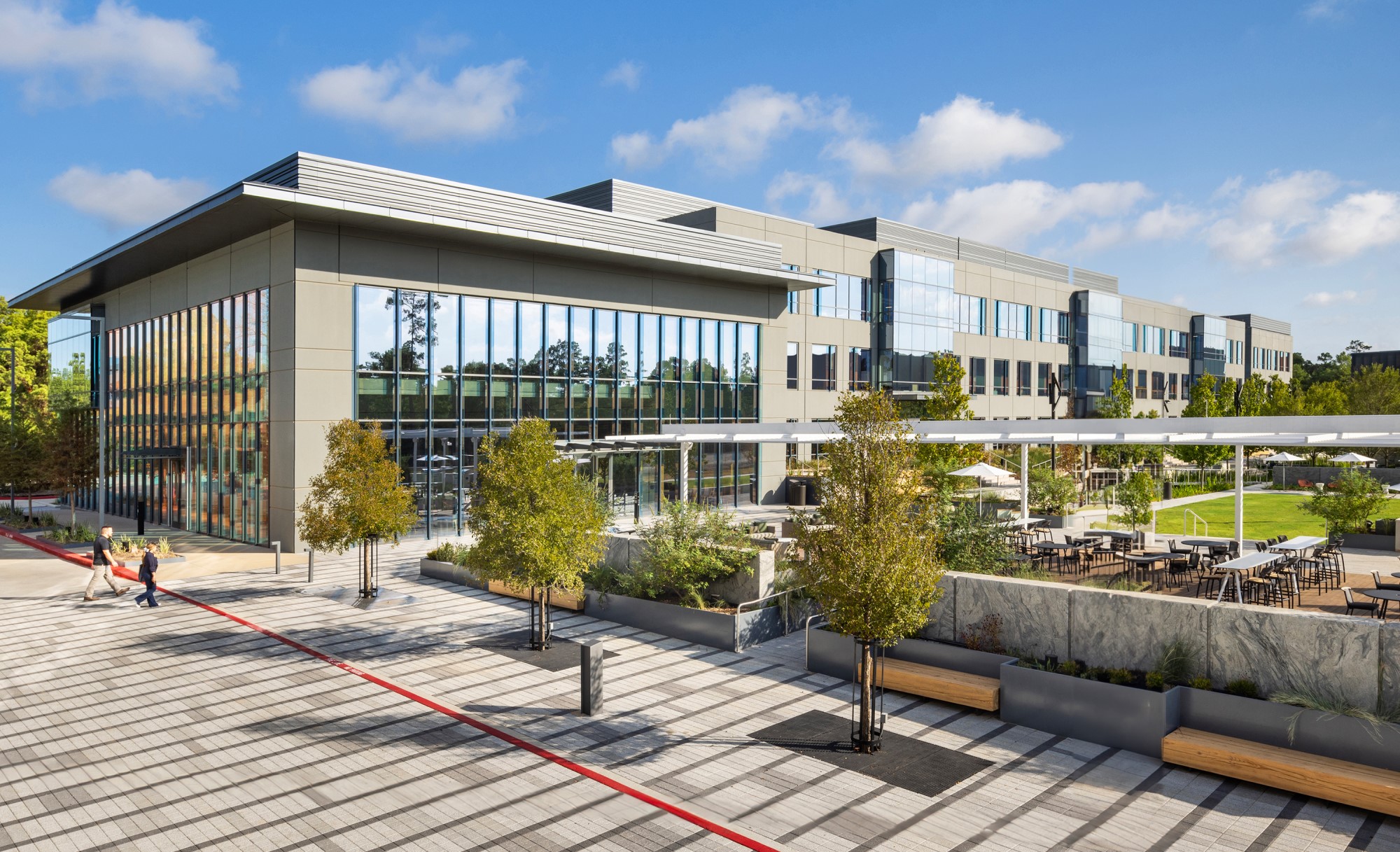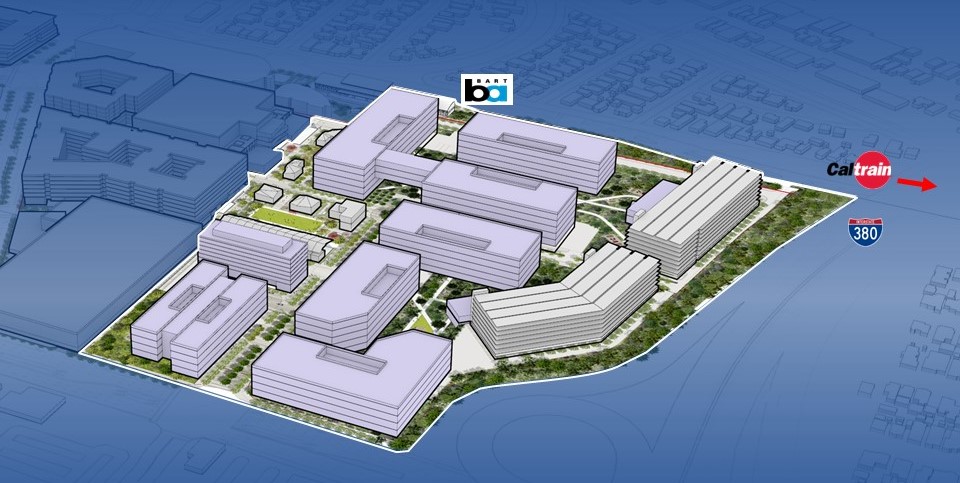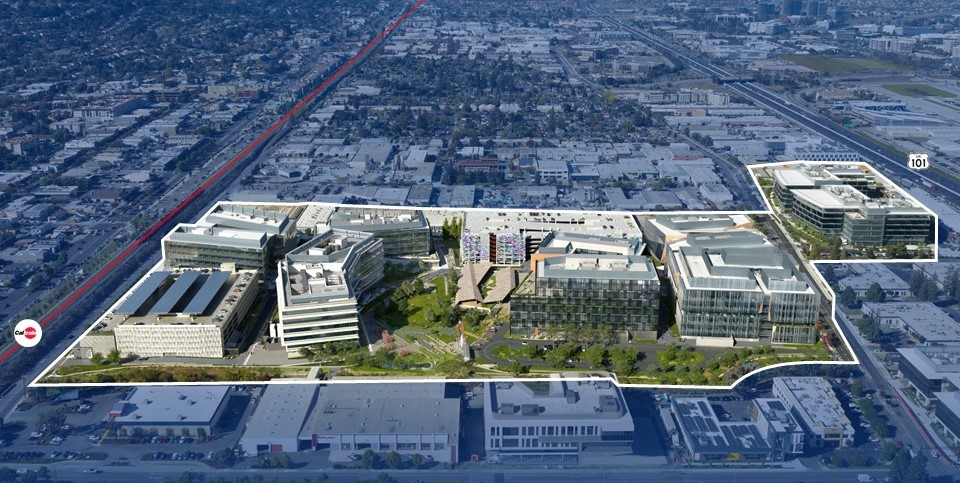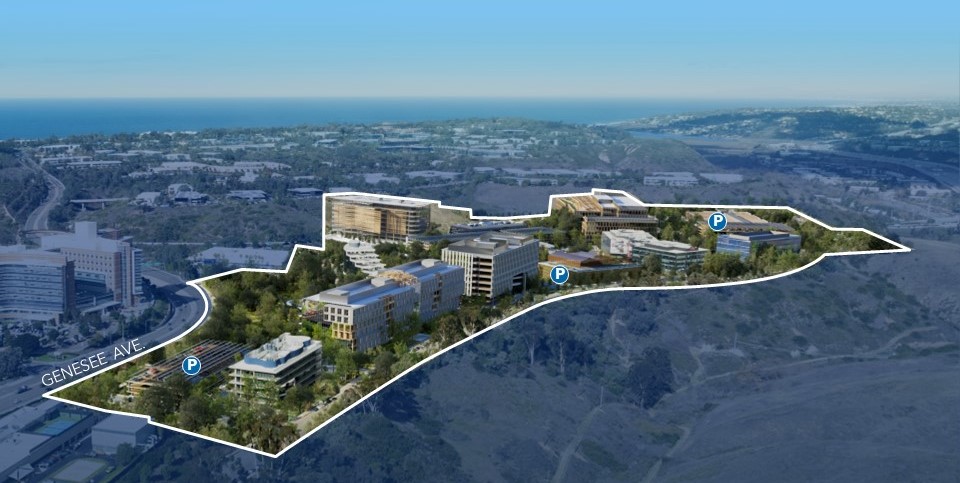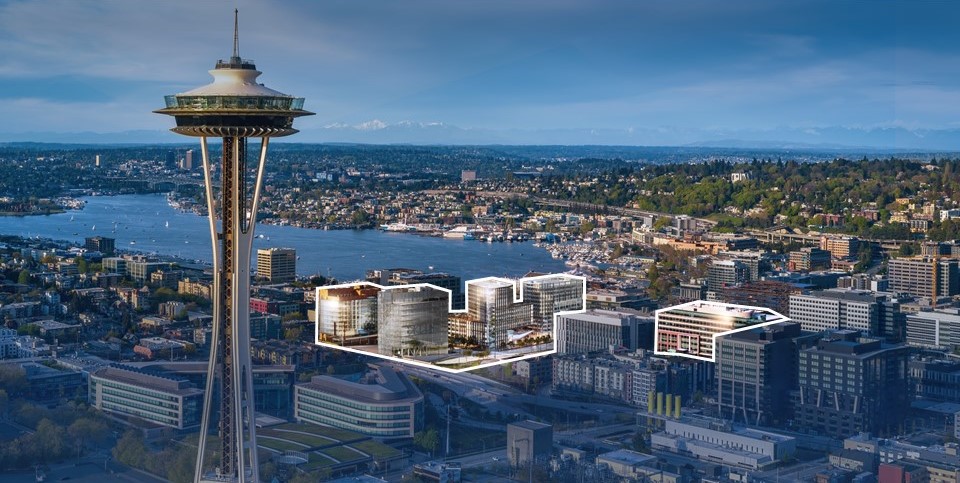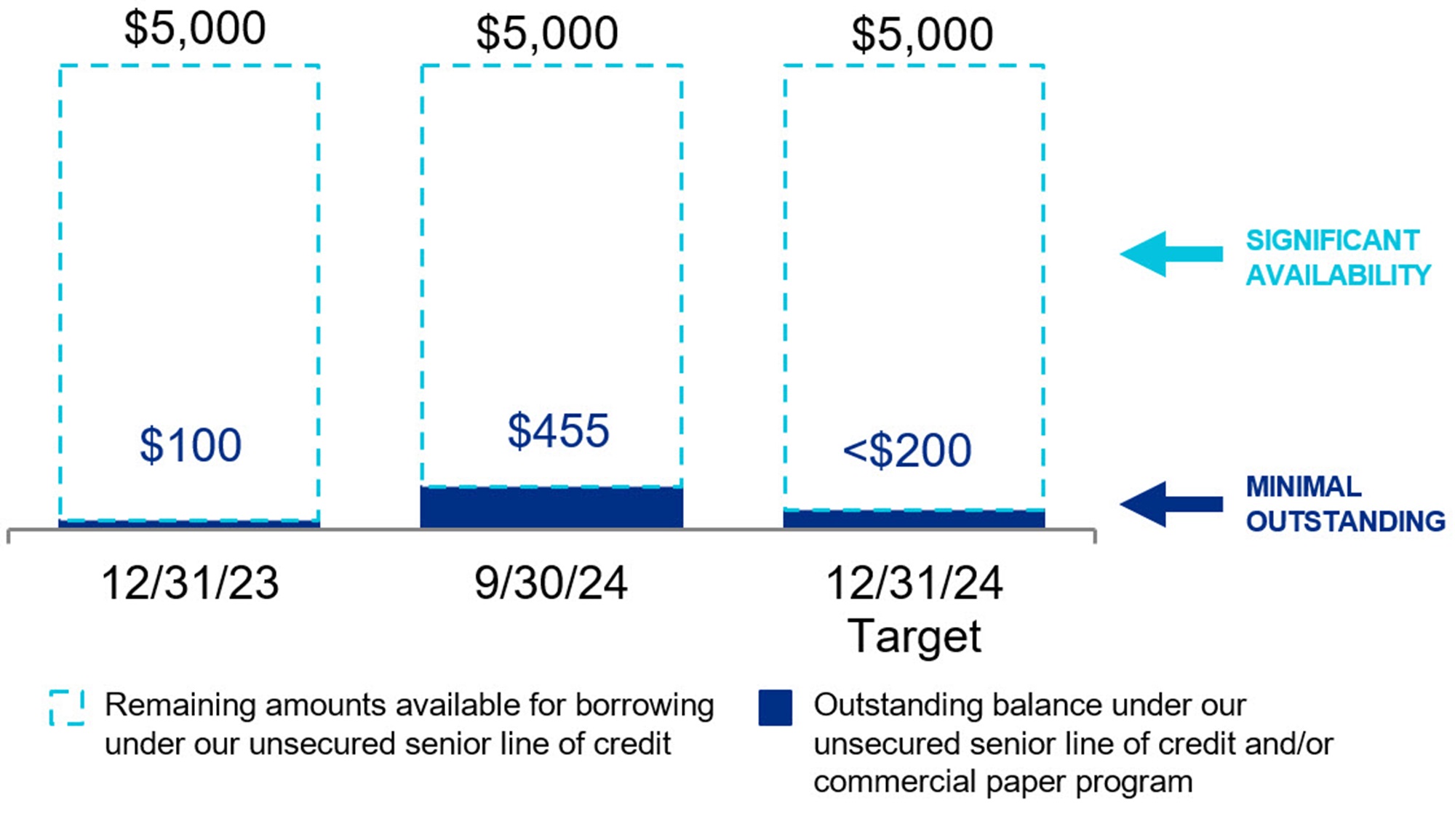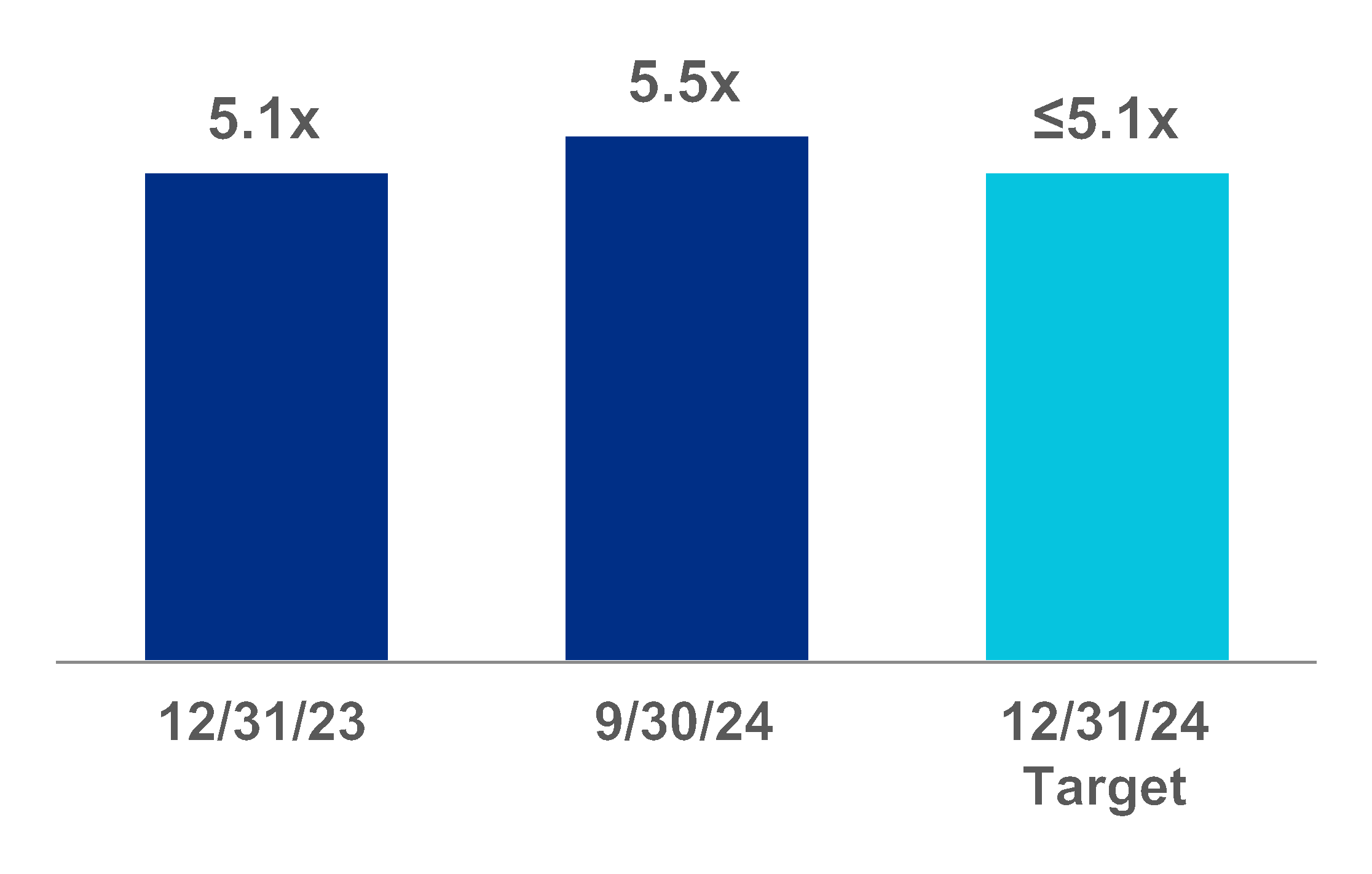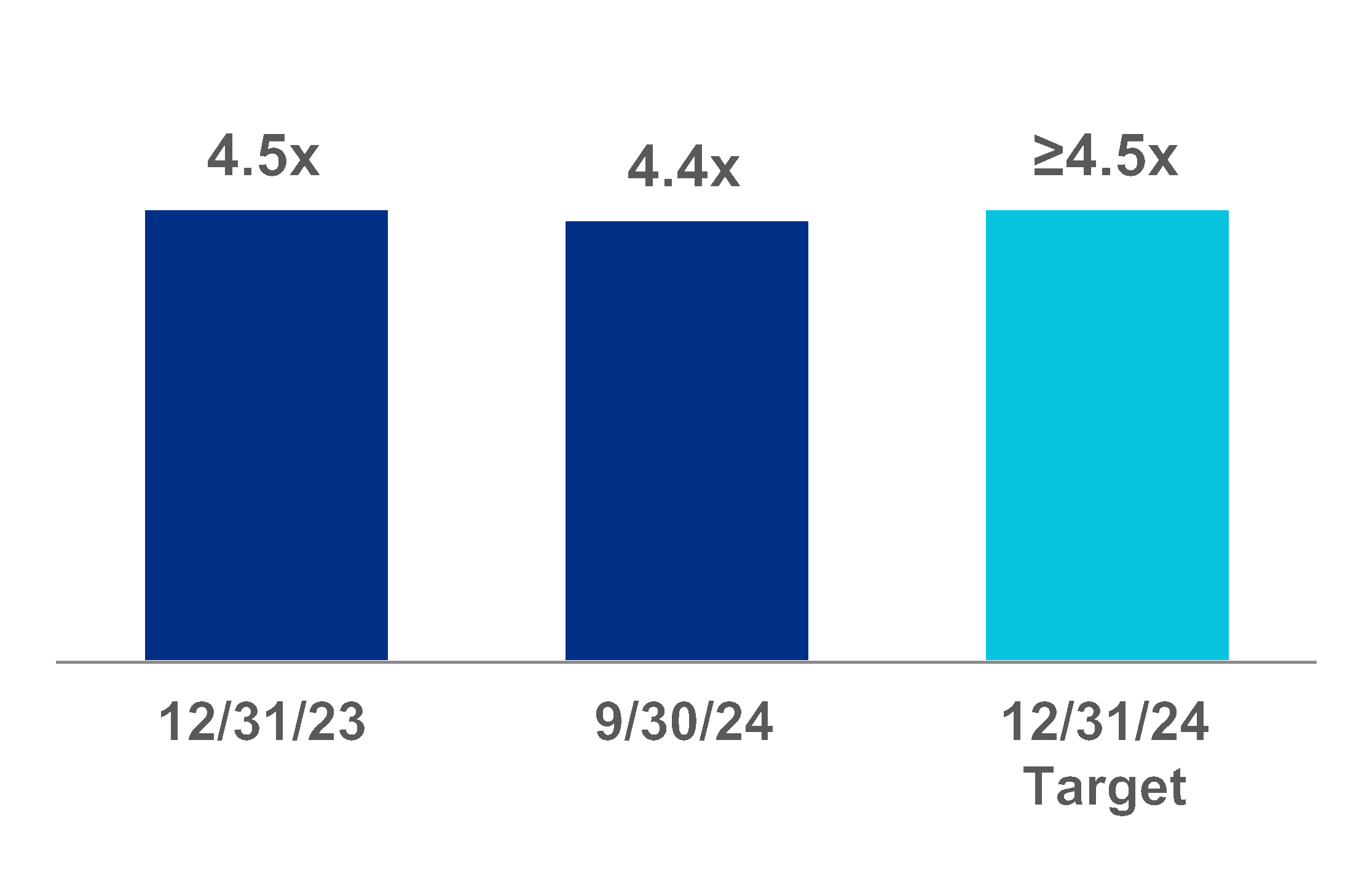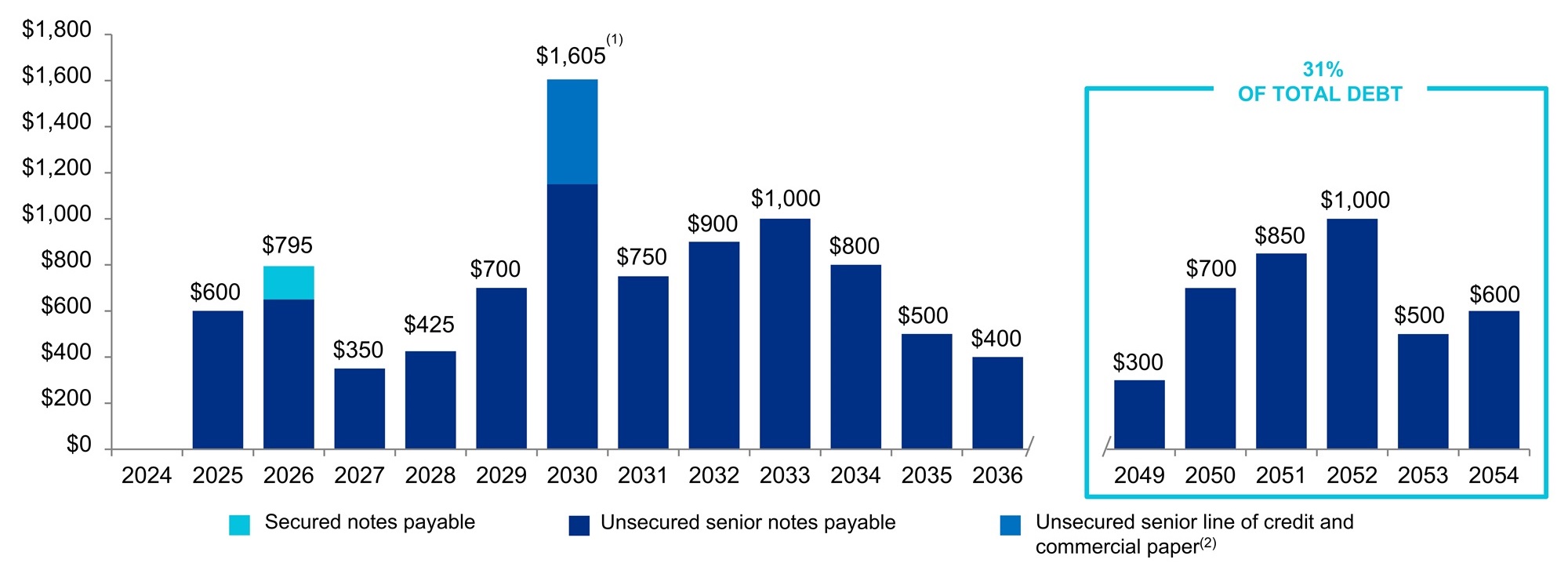Annual rental revenue
Annual rental revenue represents the annualized fixed base rental obligations, calculated in
accordance with GAAP, including the amortization of deferred revenue related to tenant-funded and -
built landlord improvements, for leases in effect as of the end of the period, related to our operating
RSF. Annual rental revenue is presented using 100% of the annual rental revenue from our consolidated
properties and our share of annual rental revenue for our unconsolidated real estate joint ventures.
Annual rental revenue per RSF is computed by dividing annual rental revenue by the sum of 100% of
the RSF of our consolidated properties and our share of the RSF of properties held in unconsolidated
real estate joint ventures. As of September 30, 2024, approximately 93% of our leases (on an annual
rental revenue basis) were triple net leases, which require tenants to pay substantially all real estate
taxes, insurance, utilities, repairs and maintenance, common area expenses, and other operating
expenses (including increases thereto) in addition to base rent. Annual rental revenue excludes these
operating expenses recovered from our tenants. Amounts recovered from our tenants related to these
operating expenses, along with base rent, are classified in income from rentals in our consolidated
statements of operations.
Capitalization rates
Capitalization rates are calculated based on net operating income and net operating income
(cash basis) annualized, excluding lease termination fees, on stabilized operating assets for the quarter
preceding the date on which the property is sold, or near-term prospective net operating income.
Capitalized interest
We capitalize interest cost as a cost of a project during periods for which activities necessary
to develop, redevelop, or reposition a project for its intended use are ongoing, provided that
expenditures for the asset have been made and interest cost has been incurred. Activities necessary to
develop, redevelop, or reposition a project include pre-construction activities such as entitlements,
permitting, design, site work, and other activities preceding commencement of construction of
aboveground building improvements. The advancement of pre-construction efforts is focused on
reducing the time required to deliver projects to prospective tenants. These critical activities add
significant value for future ground-up development and are required for the vertical construction of
buildings. If we cease activities necessary to prepare a project for its intended use, interest costs related
to such project are expensed as incurred.
Cash interest
Cash interest is equal to interest expense calculated in accordance with GAAP plus
capitalized interest, less amortization of loan fees and debt premiums (discounts). Refer to the definition
of fixed-charge coverage ratio for a reconciliation of interest expense, the most directly comparable
financial measure calculated and presented in accordance with GAAP, to cash interest.
Class A/A+ properties and AAA locations
Class A/A+ properties are properties clustered in AAA locations that provide innovative
tenants with highly dynamic and collaborative environments that enhance their ability to successfully
recruit and retain world-class talent and inspire productivity, efficiency, creativity, and success. Class A/
A+ properties generally command higher annual rental rates than other classes of similar properties.
AAA locations are in close proximity to concentrations of specialized skills, knowledge, institutions, and
related businesses.
Development, redevelopment, and pre-construction
A key component of our business model is our disciplined allocation of capital to the
development and redevelopment of new Class A/A+ properties, and property enhancements identified
during the underwriting of certain acquired properties, located in collaborative mega campuses in AAA
life science innovation clusters. These projects are generally focused on providing high-quality, generic,
and reusable spaces that meet the real estate requirements of a wide range of tenants. Upon
completion, each development and redevelopment project is expected to generate increases in rental
income, net operating income, and cash flows. Our development and redevelopment projects are
generally in locations that are highly desirable to high-quality entities, which we believe results in higher
occupancy levels, longer lease terms, higher rental income, higher returns, and greater long-term asset
value.
Development projects generally consist of the ground-up development of generic and
reusable laboratory facilities. Redevelopment projects consist of the permanent change in use of
acquired office, warehouse, or shell space into laboratory space. We generally will not commence new
development projects for aboveground construction of new Class A/A+ laboratory space without first
securing significant pre-leasing for such space, except when there is solid market demand for high-
quality Class A/A+ properties.
Priority anticipated projects are those most likely to commence future ground-up development
or first-time conversion from non-laboratory space to laboratory space prior to our other future projects,
pending market conditions and leasing negotiations.
Pre-construction activities include entitlements, permitting, design, site work, and other
activities preceding commencement of construction of aboveground building improvements. The
advancement of pre-construction efforts is focused on reducing the time required to deliver projects to
prospective tenants. These critical activities add significant value for future ground-up development and
are required for the vertical construction of buildings. Ultimately, these projects will provide high-quality
facilities and are expected to generate significant revenue and cash flows.
Development, redevelopment, and pre-construction spending also includes the following
costs: (i) amounts to bring certain acquired properties up to market standard and/or other costs identified
during the acquisition process (generally within two years of acquisition) and (ii) permanent conversion
of space for highly flexible, move-in-ready laboratory space to foster the growth of promising early- and
growth-stage life science companies.
Revenue-enhancing and repositioning capital expenditures represent spending to reposition
or significantly change the use of a property, including through improvement in the asset quality from
Class B to Class A/A+.
Non-revenue-enhancing capital expenditures represent costs required to maintain the current
revenues of a stabilized property, including the associated costs for renewed and re-leased space.
Dividend payout ratio (common stock)
Dividend payout ratio (common stock) is the ratio of the absolute dollar amount of dividends
on our common stock (shares of common stock outstanding on the respective record dates multiplied by
the related dividend per share) to funds from operations attributable to Alexandria’s common
stockholders – diluted, as adjusted.
